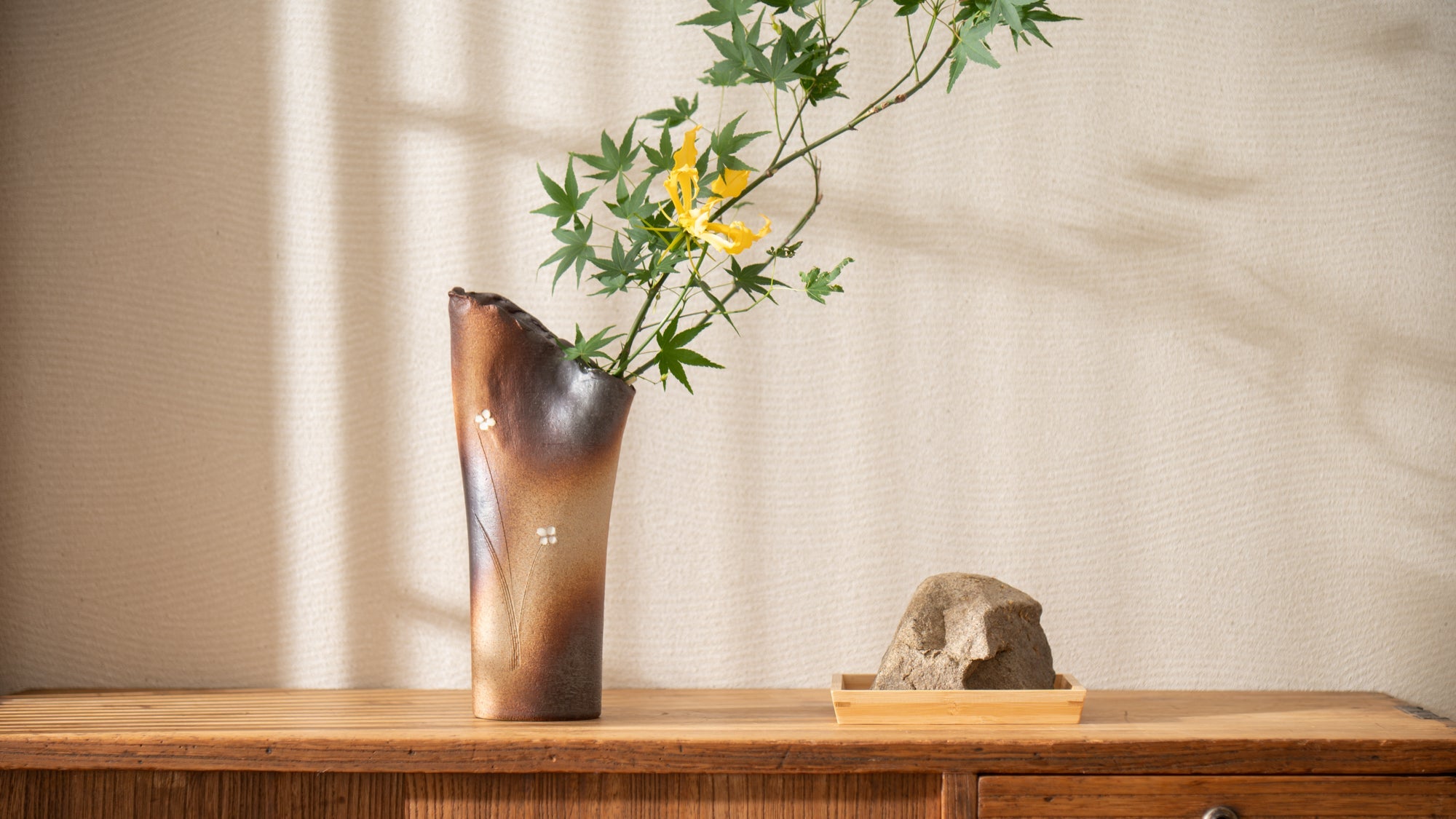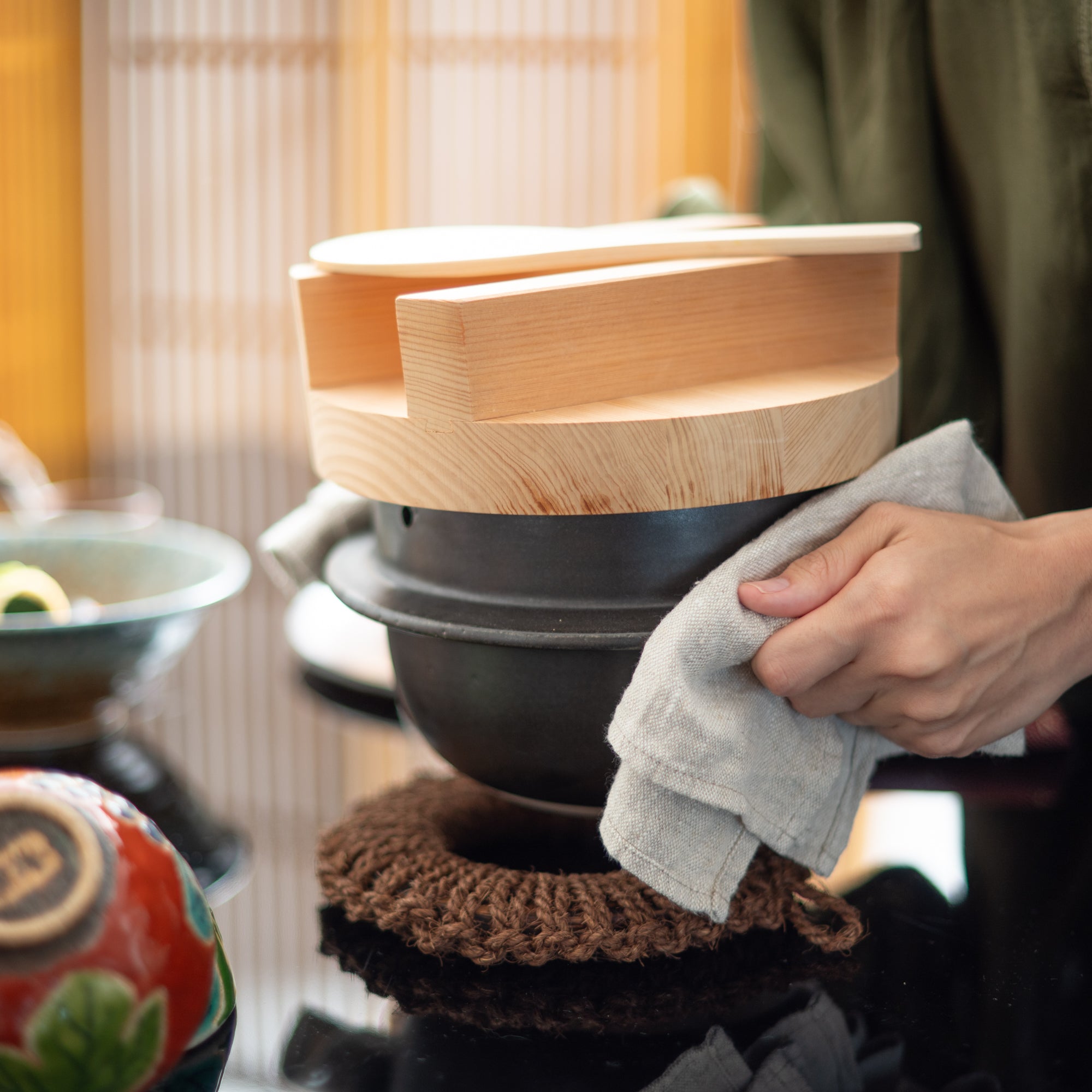
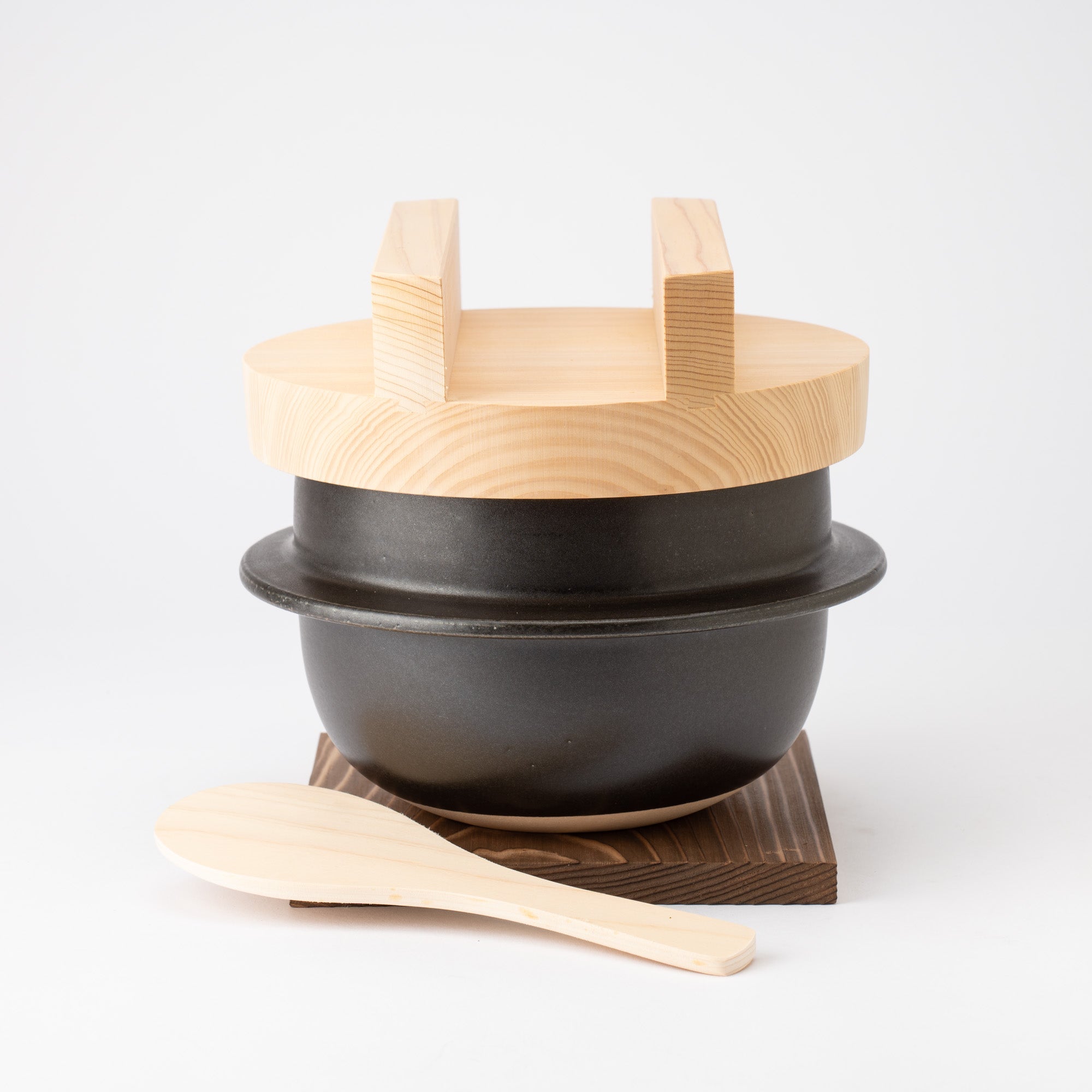
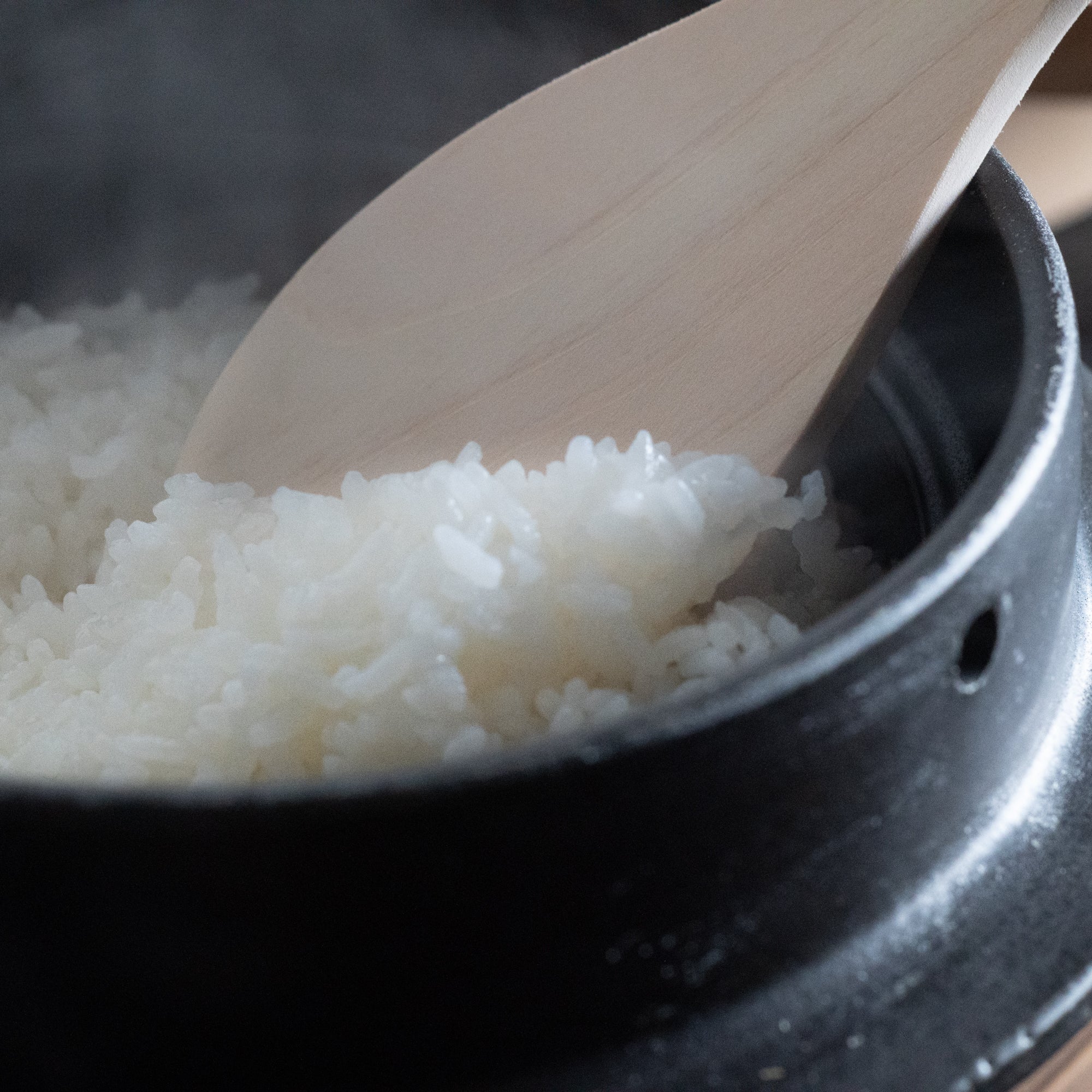

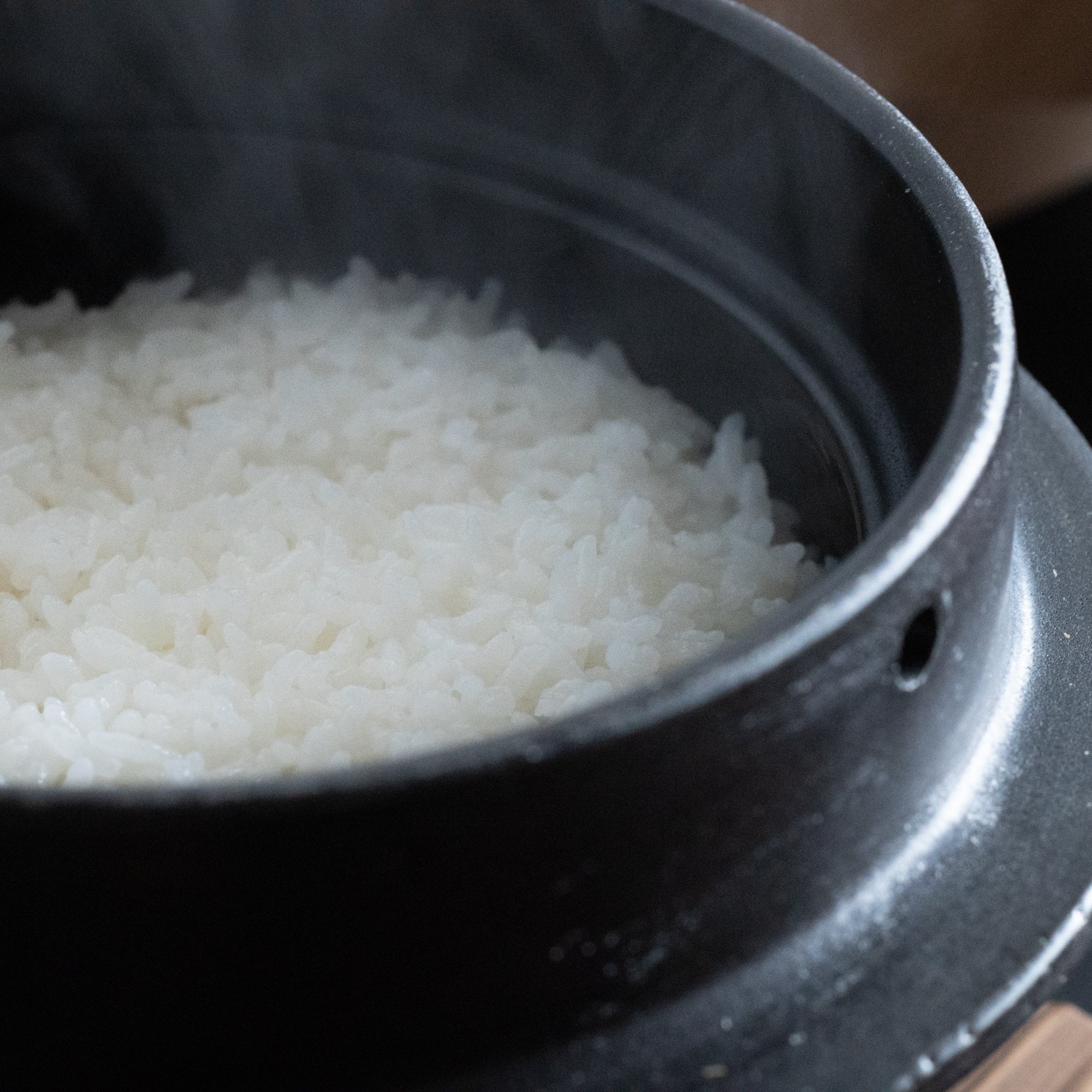
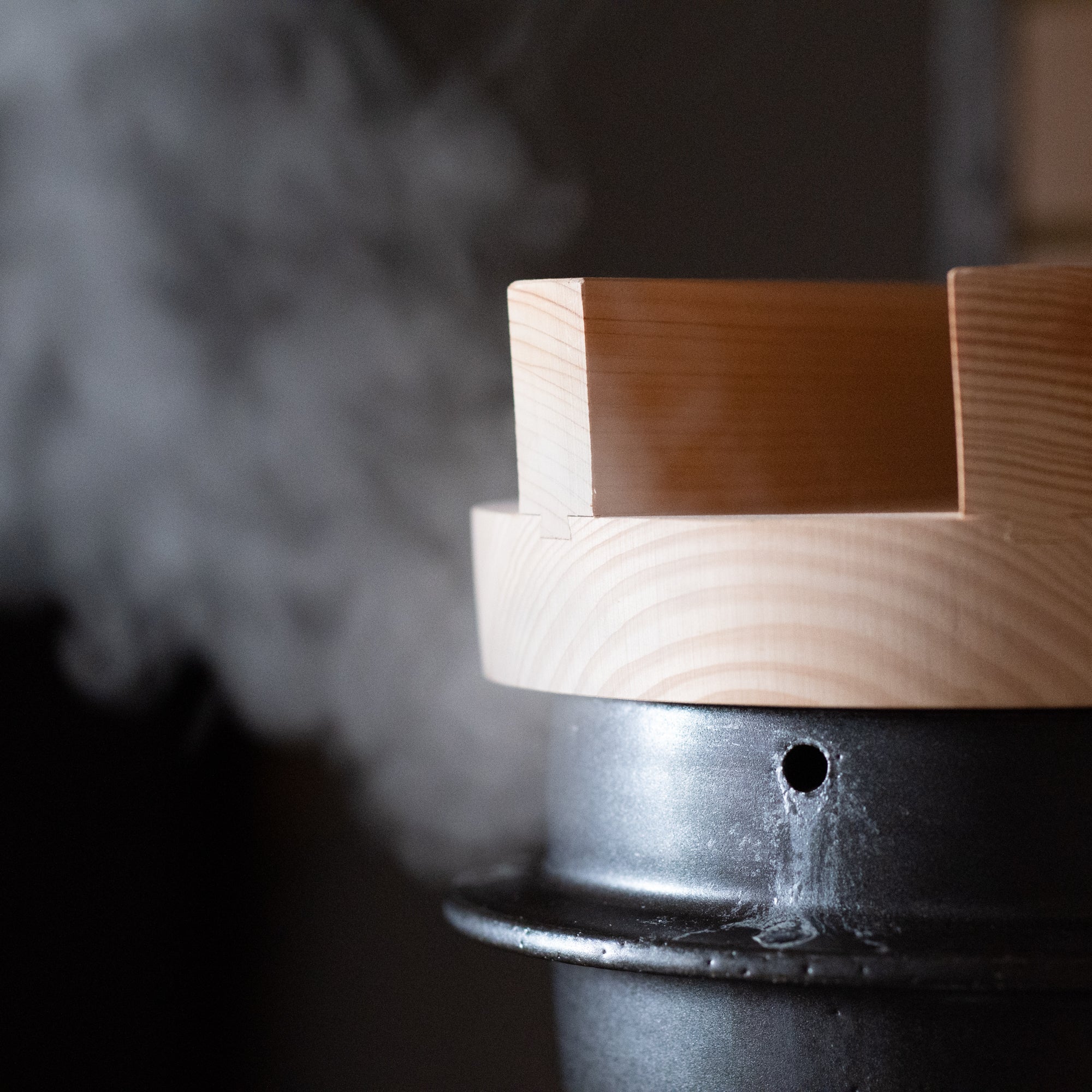
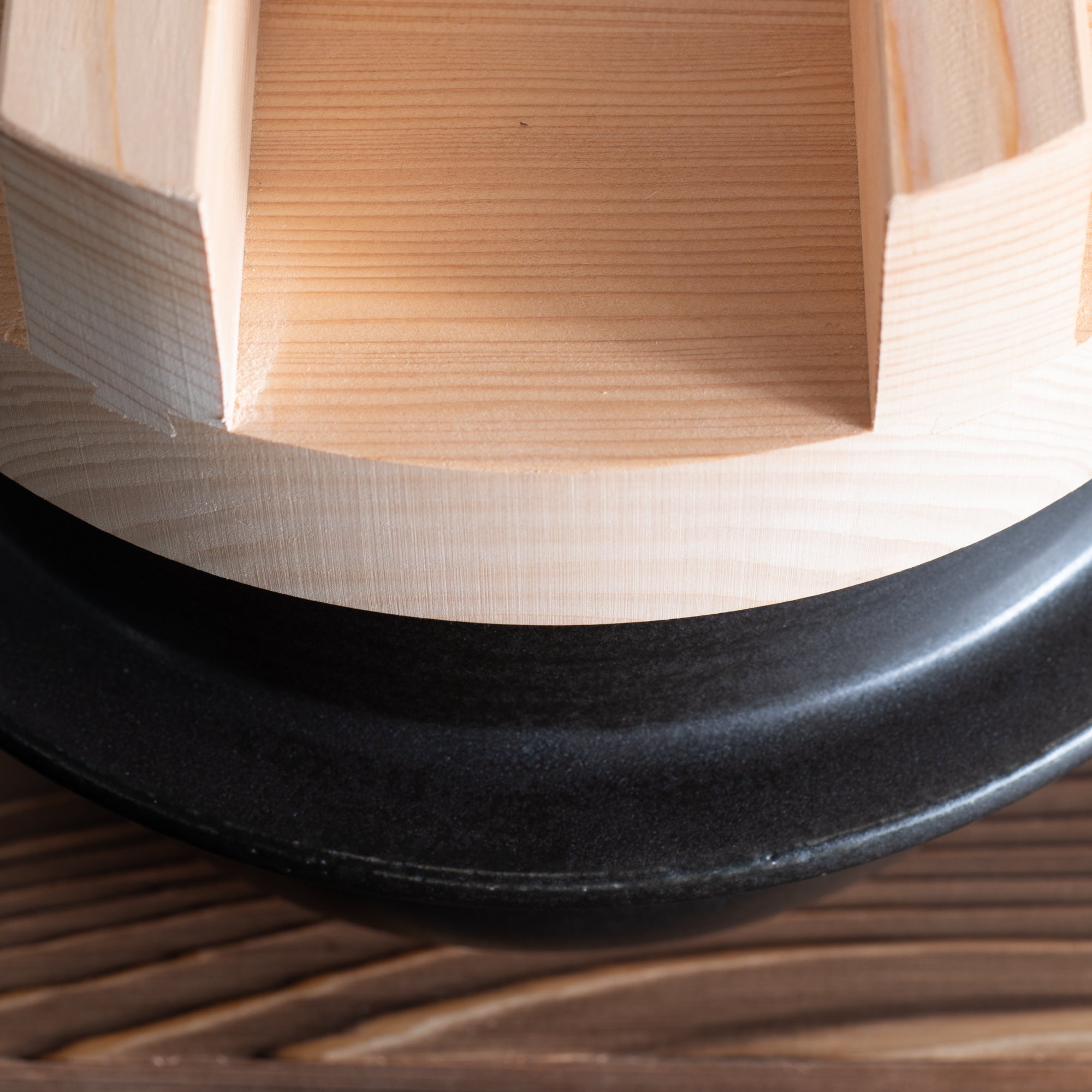
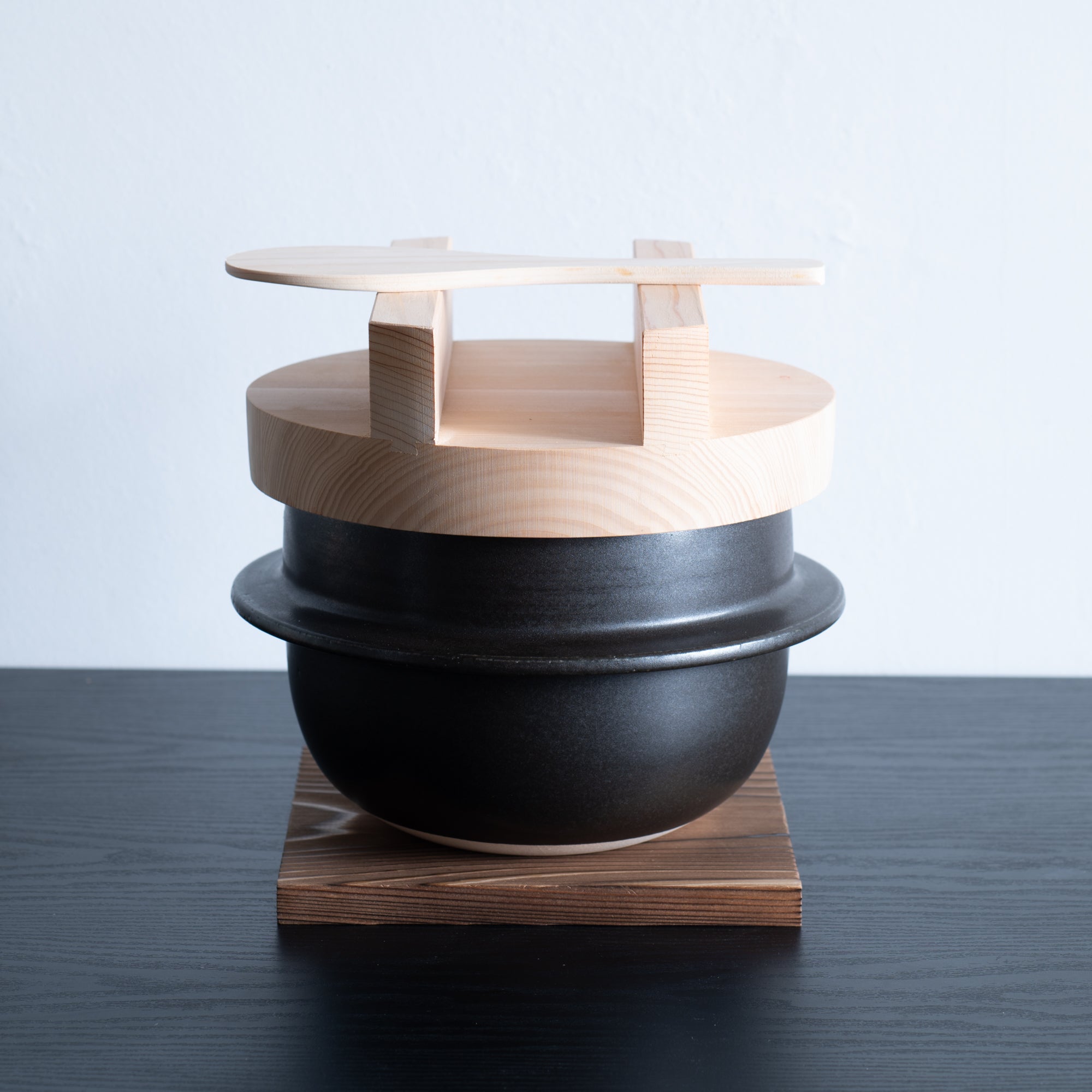

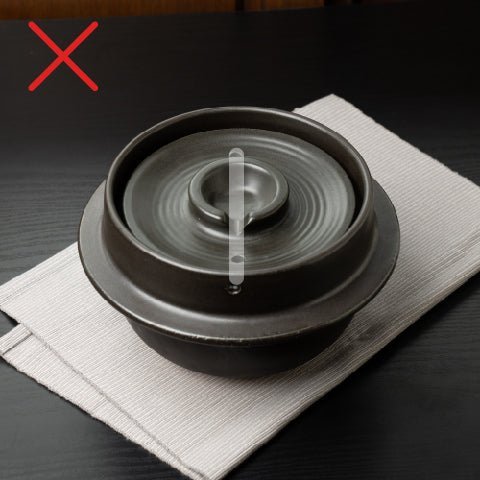
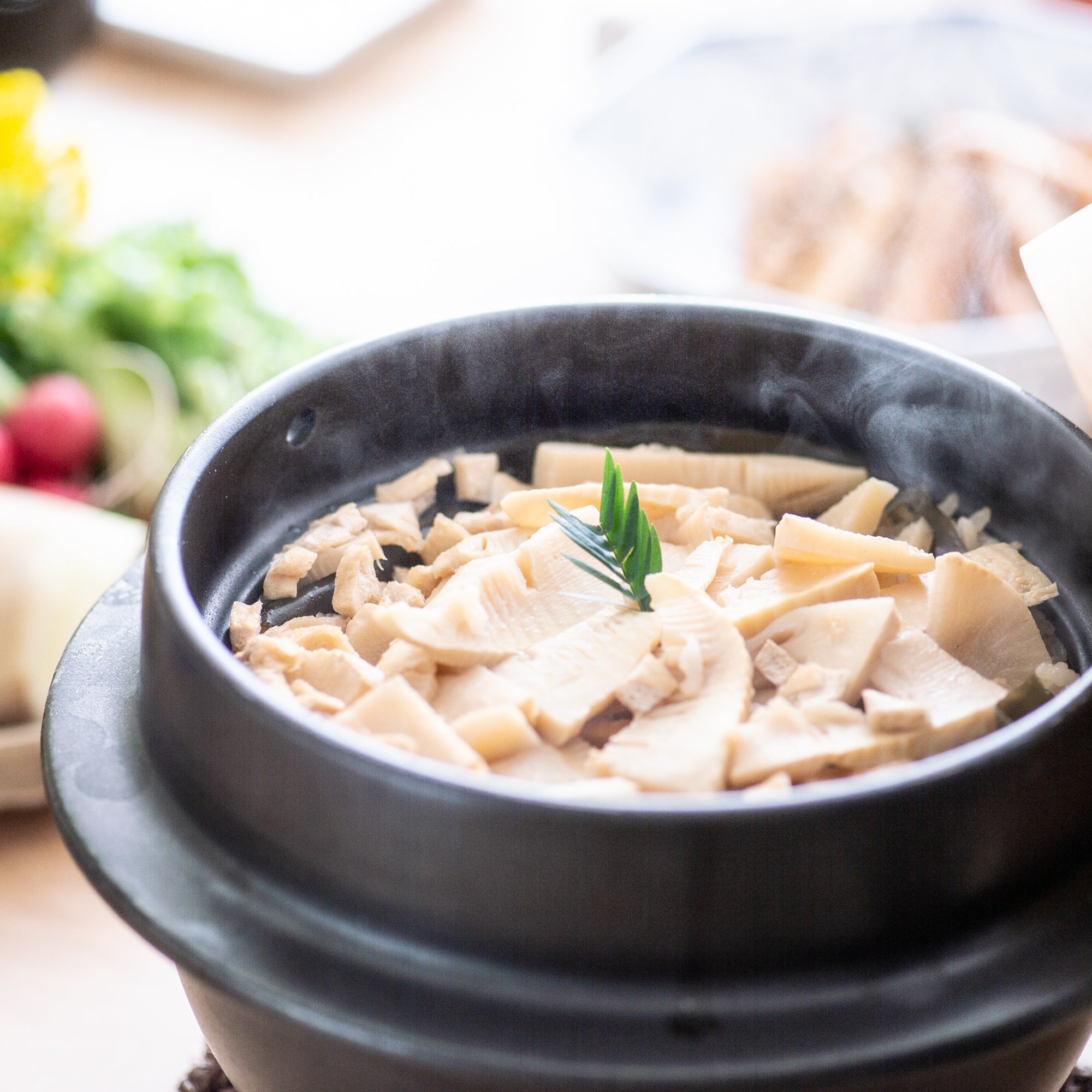
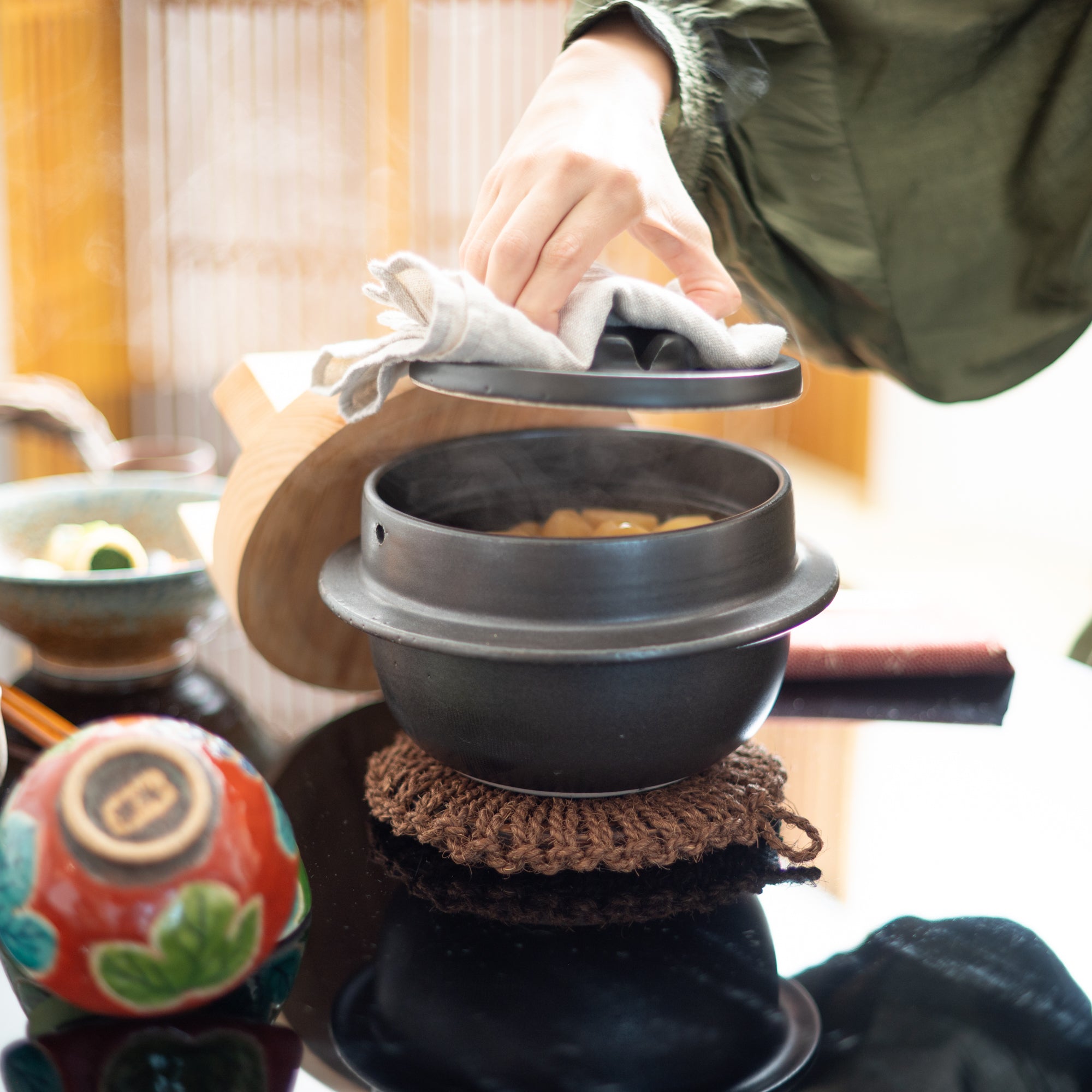
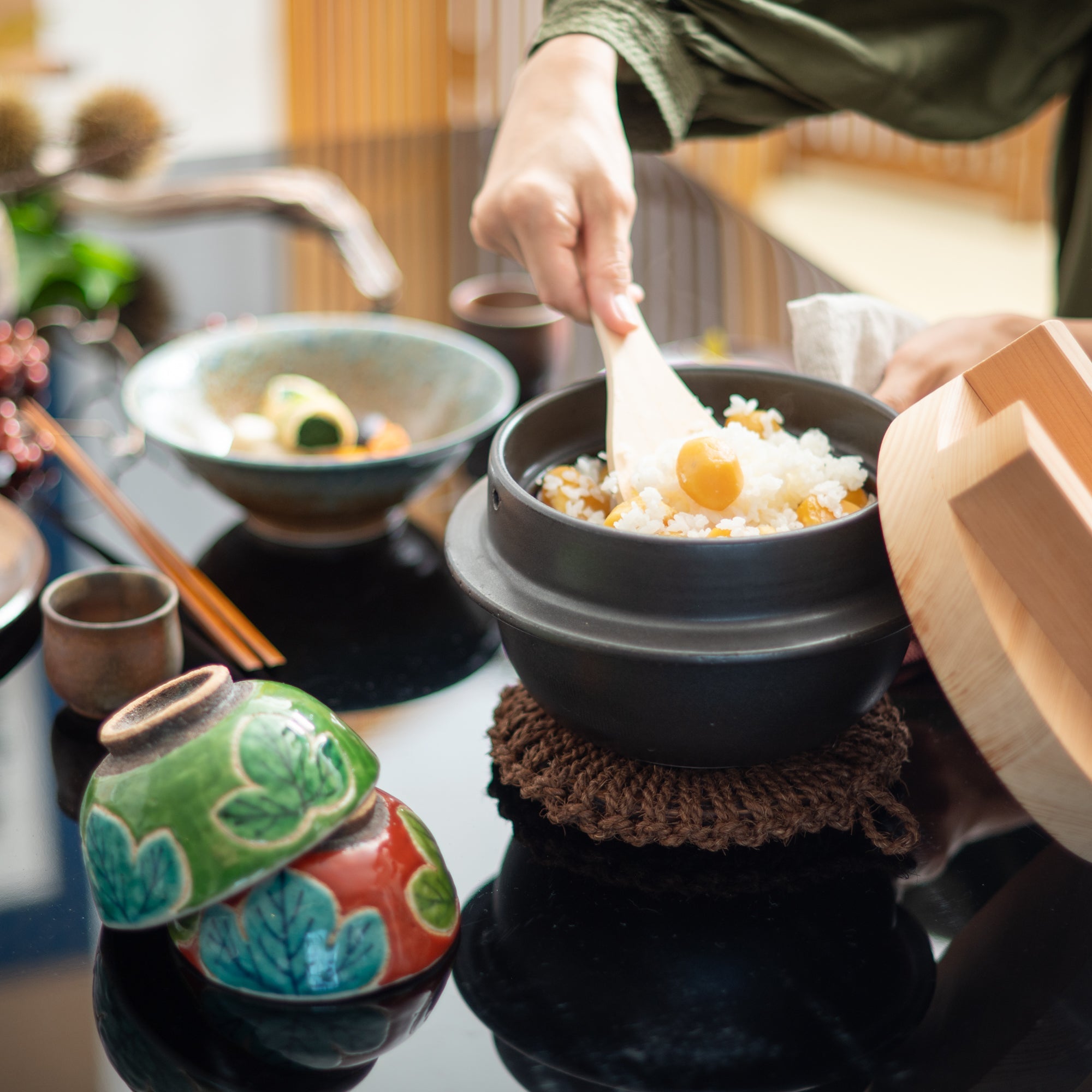
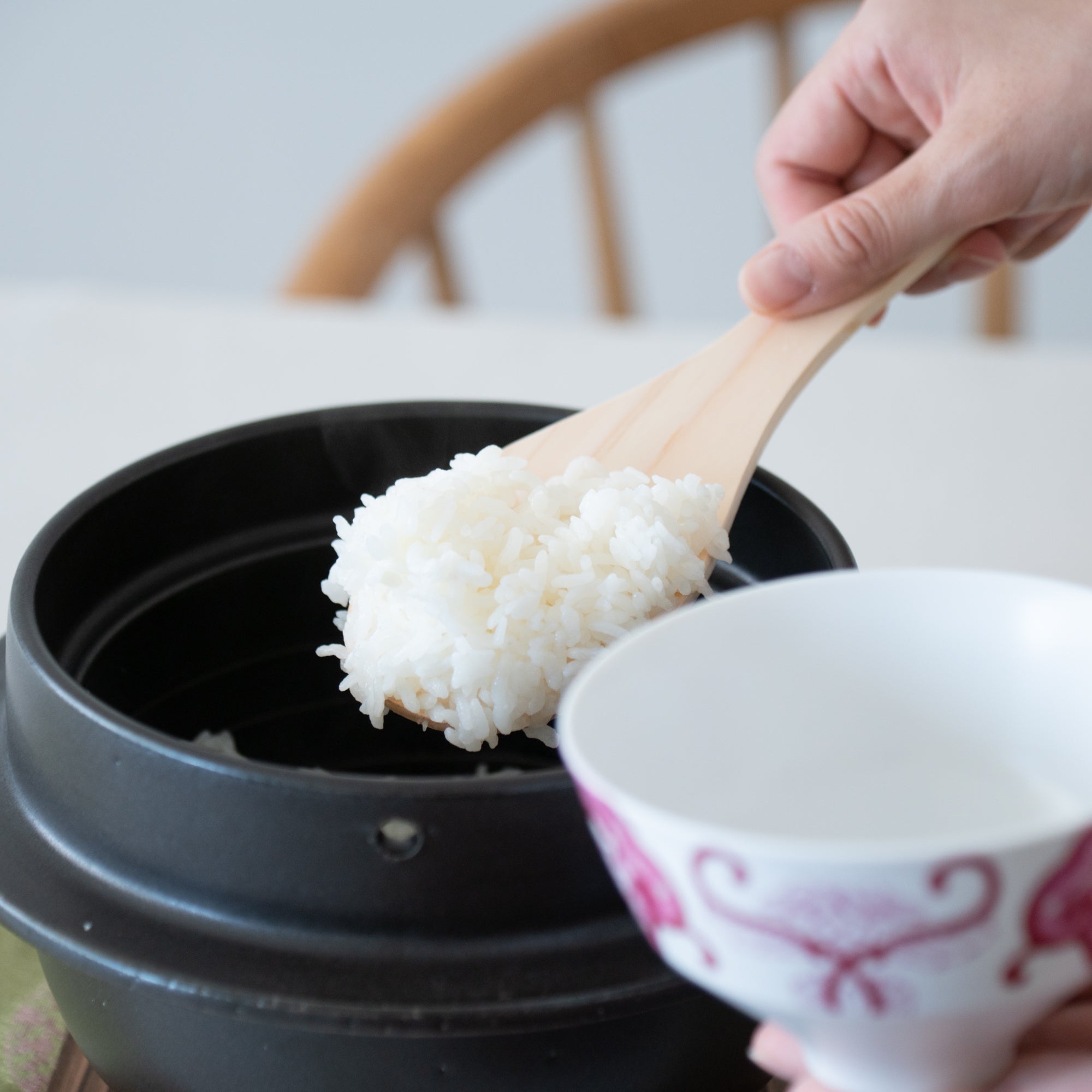
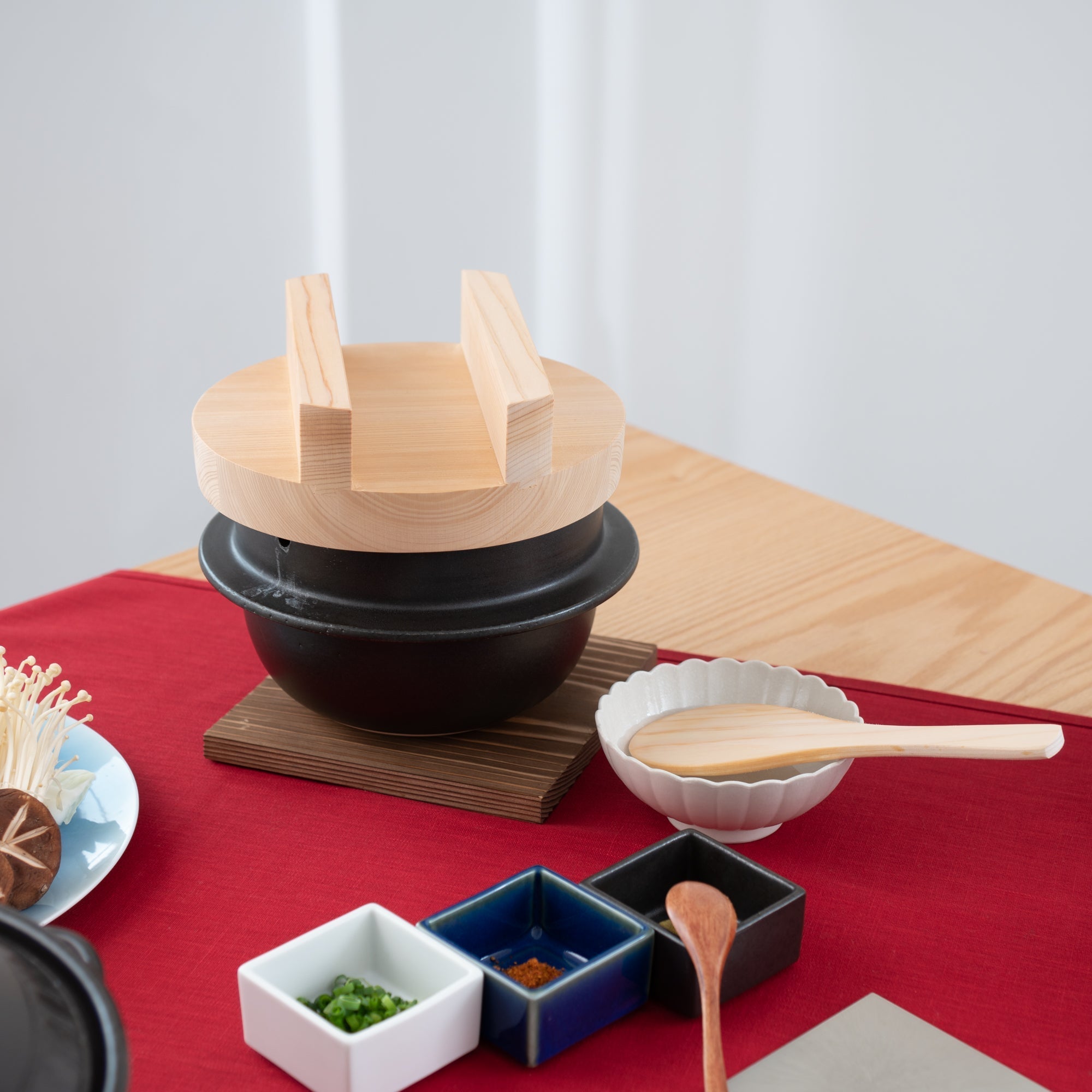
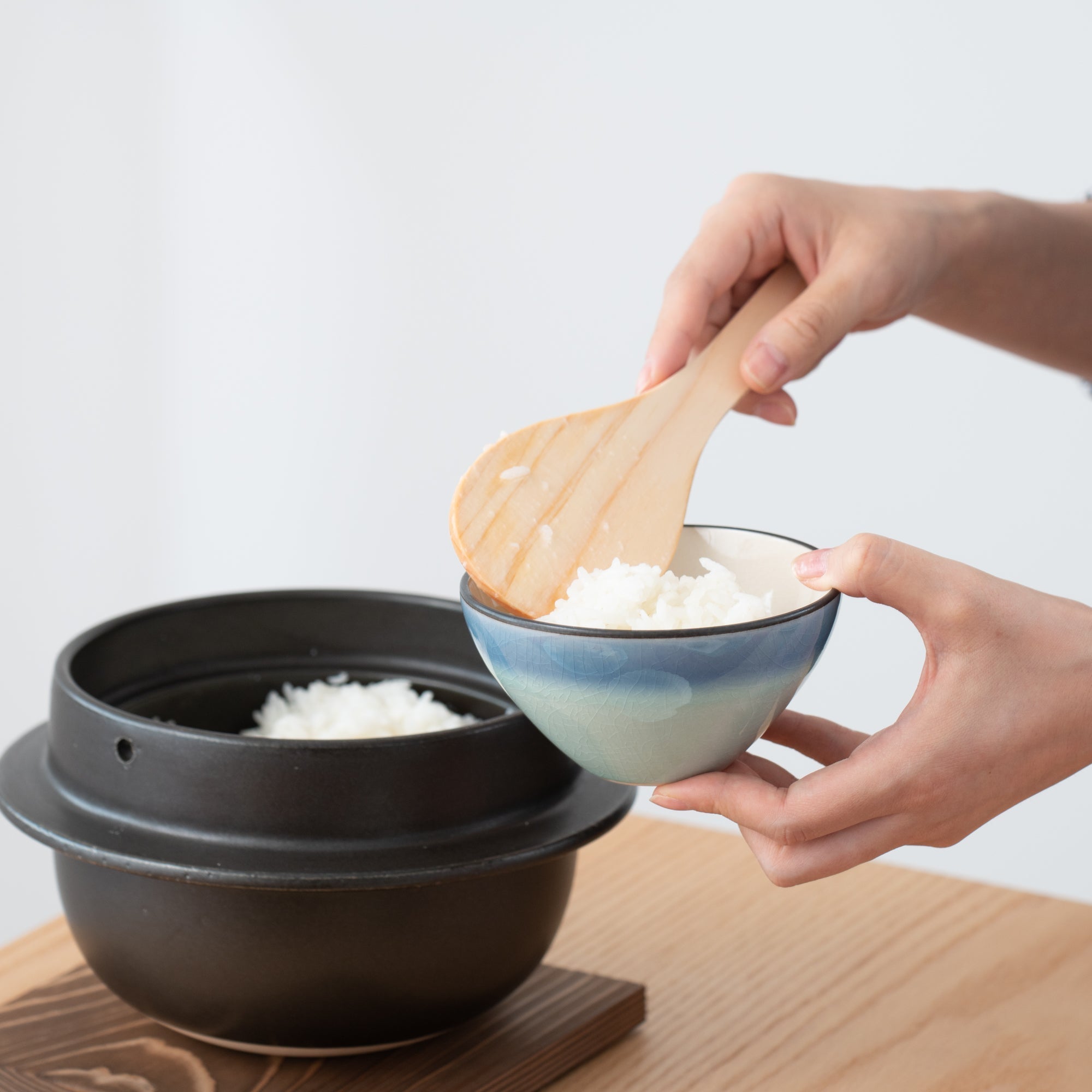
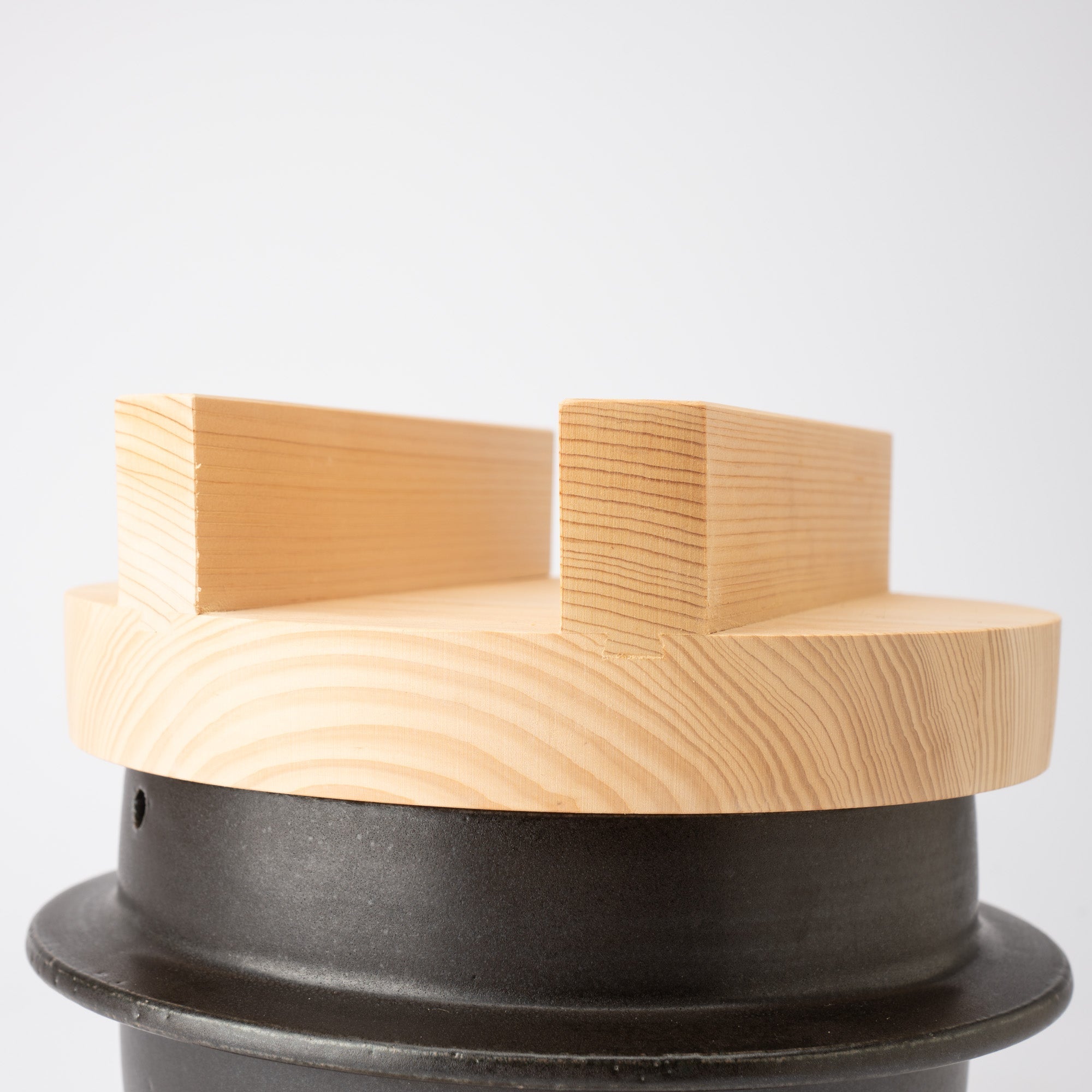
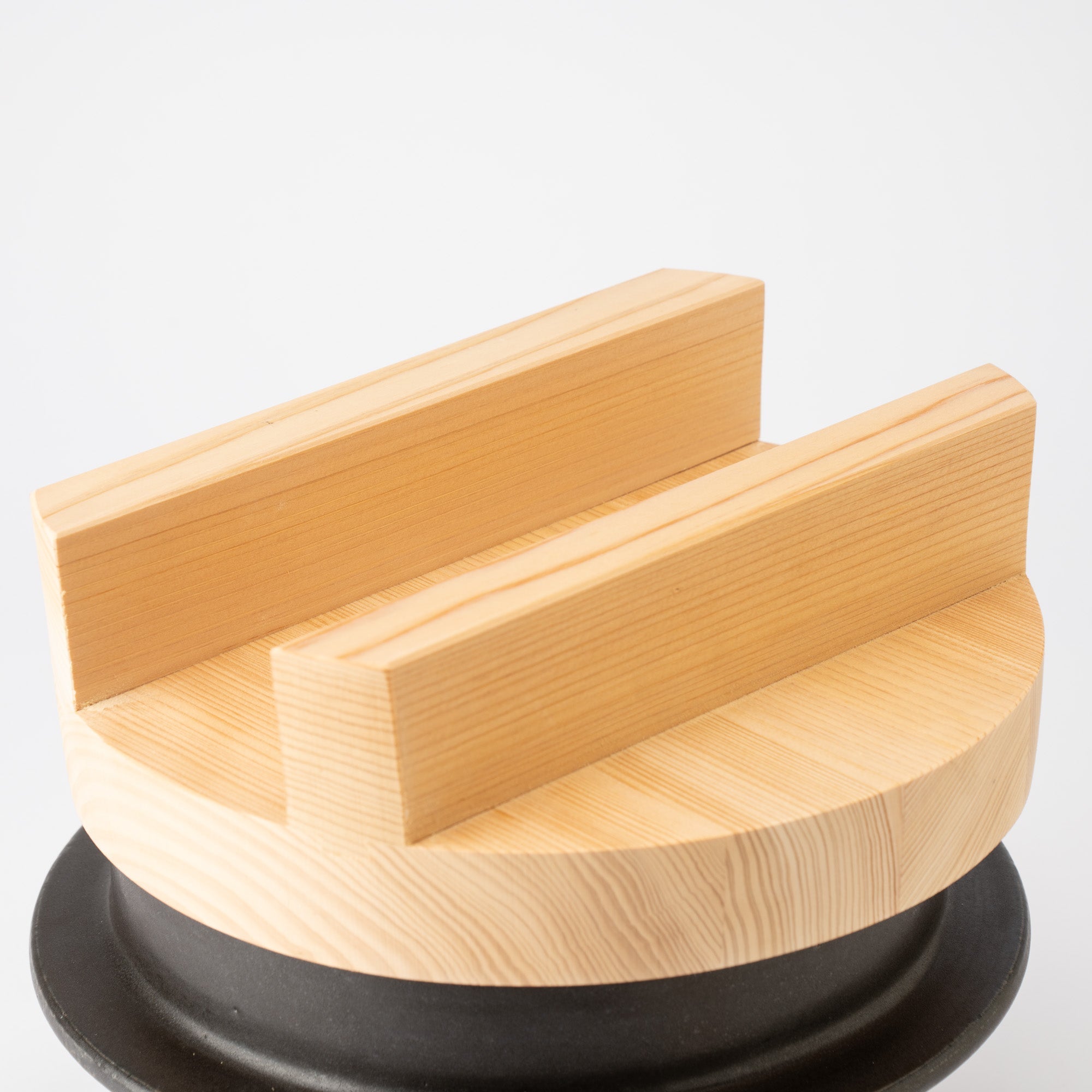
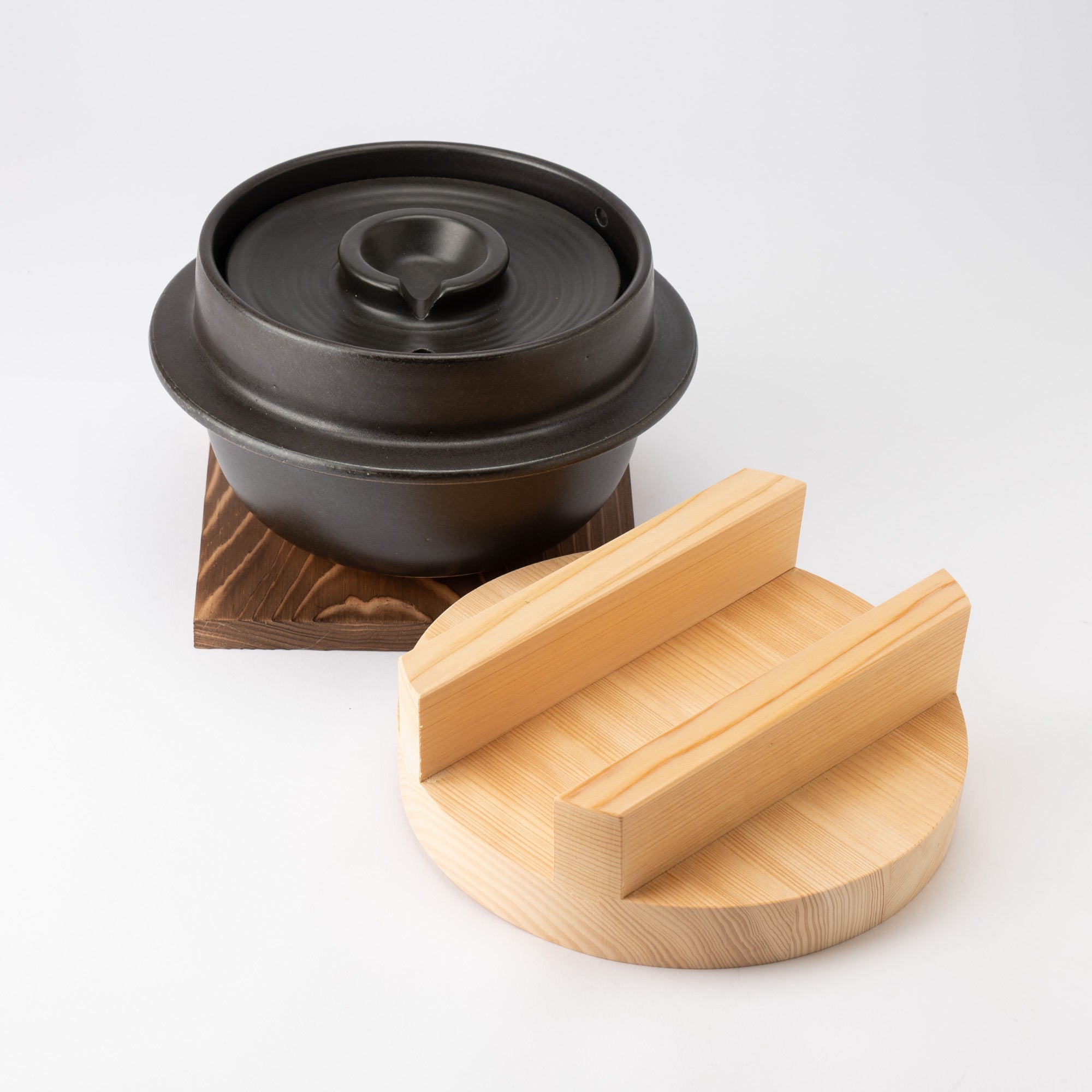
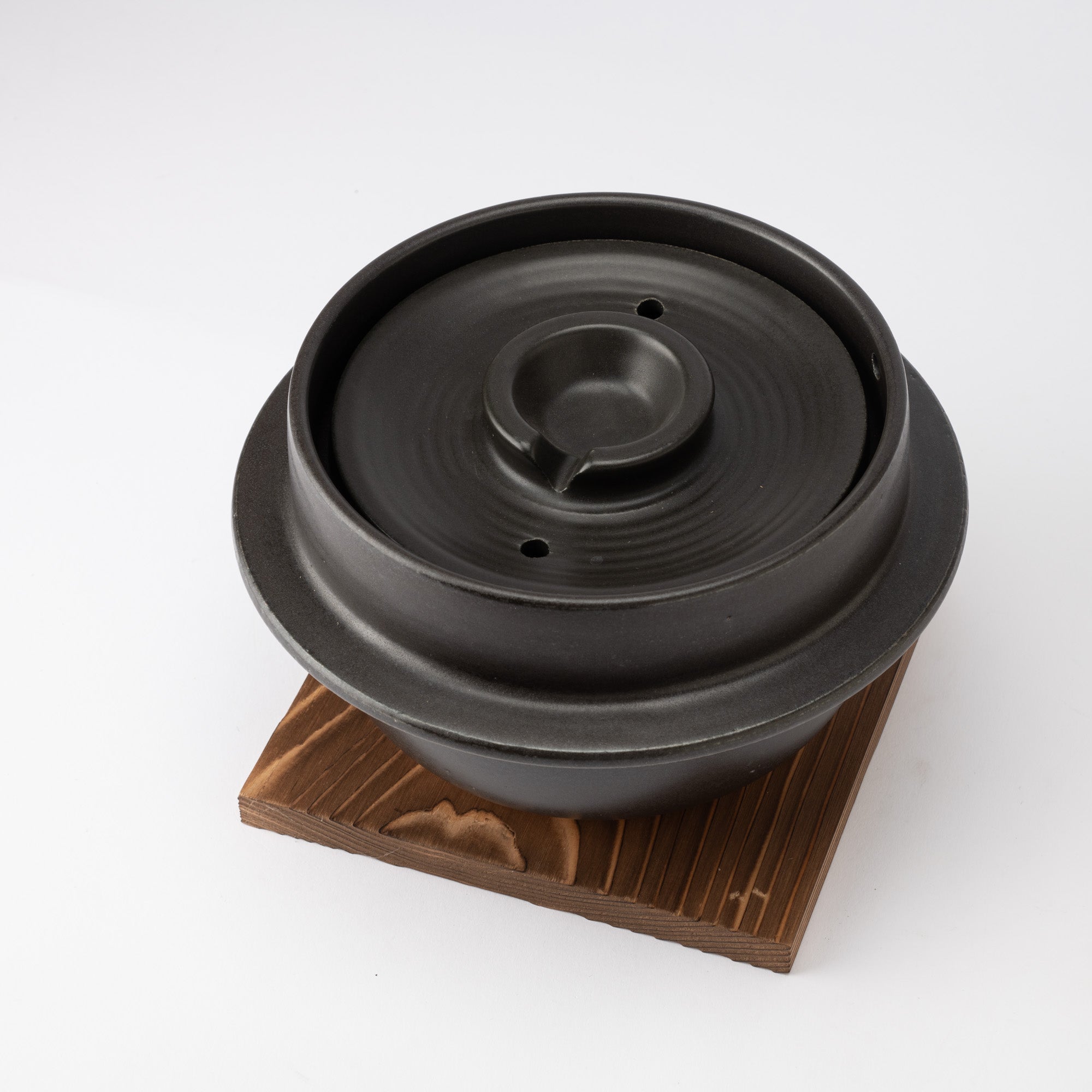
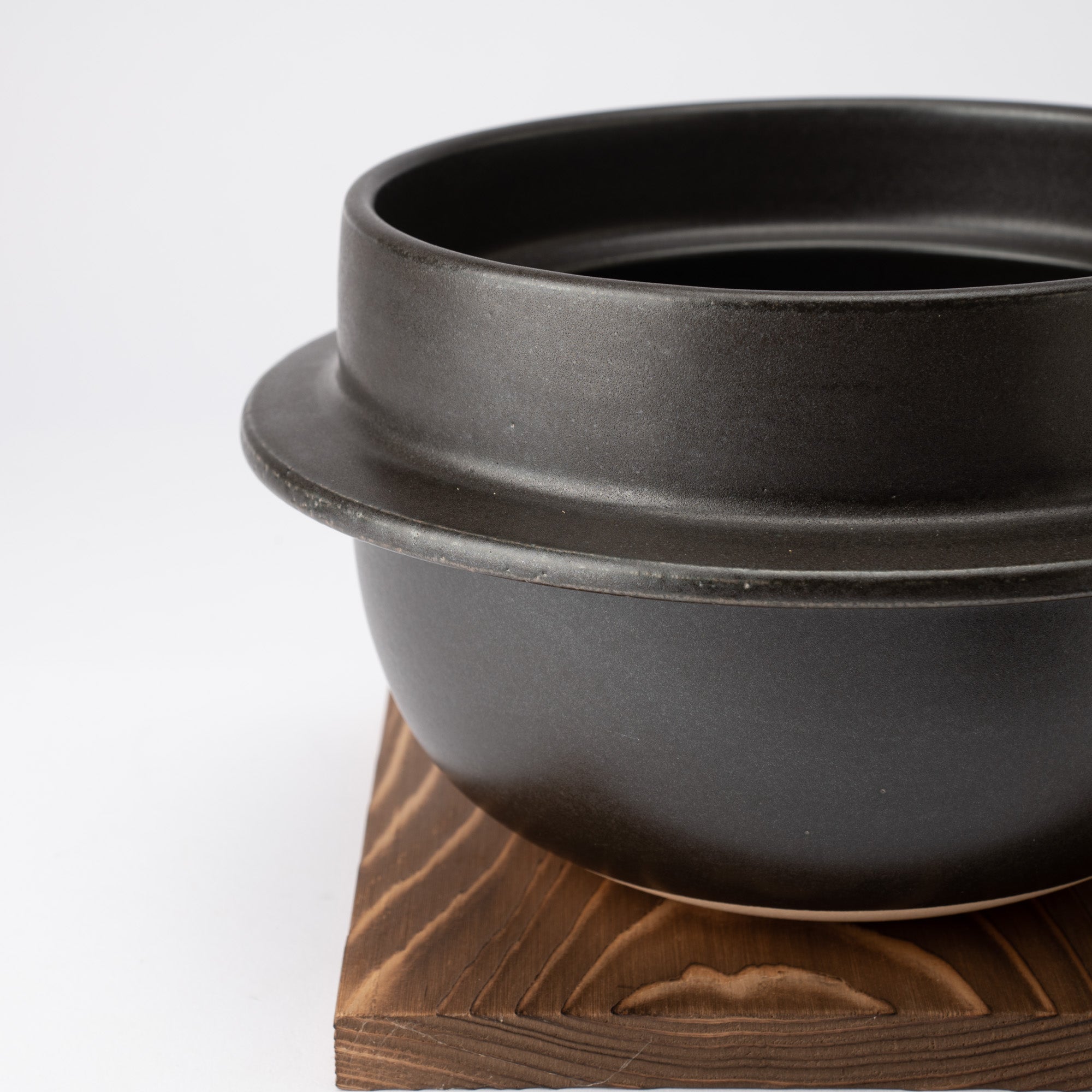
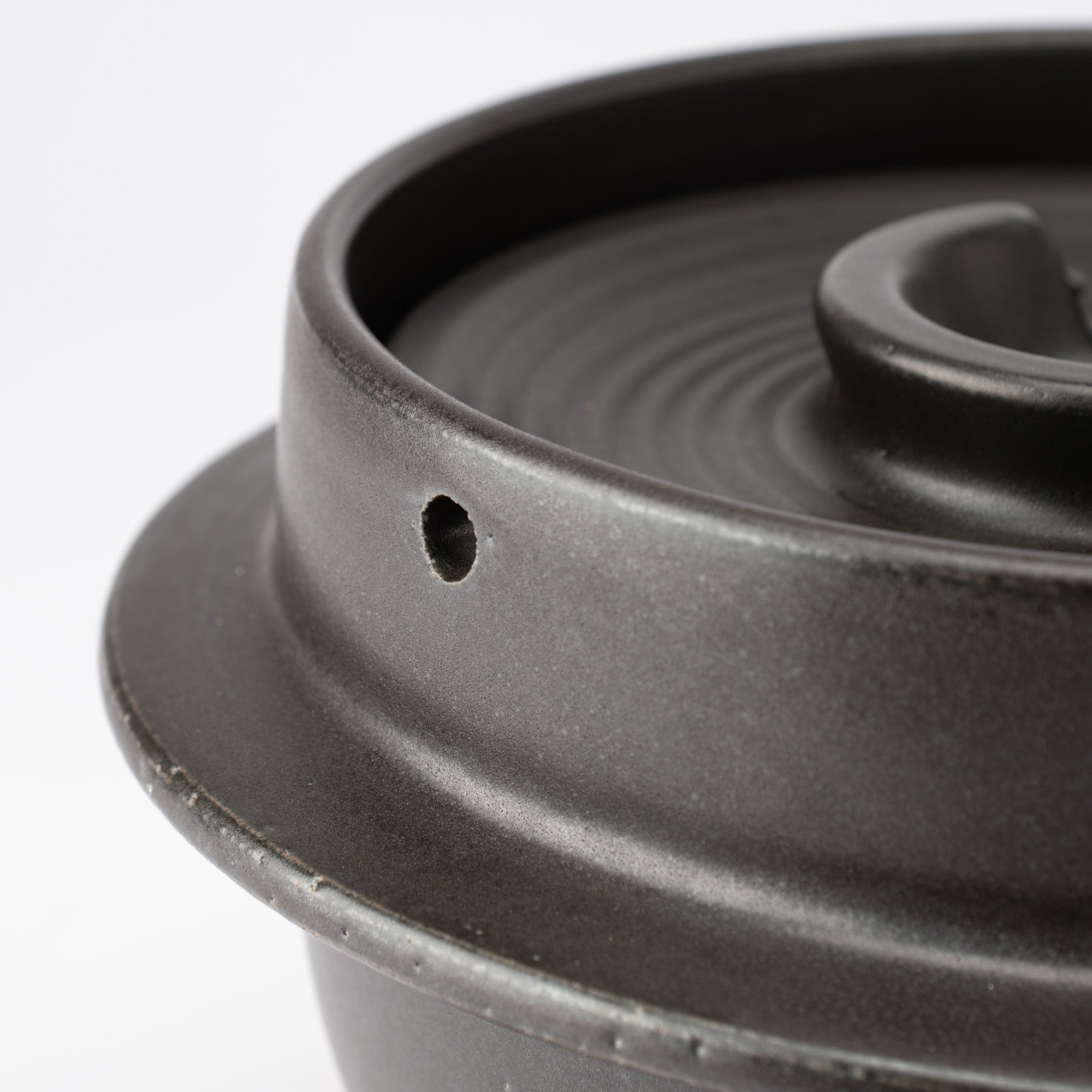
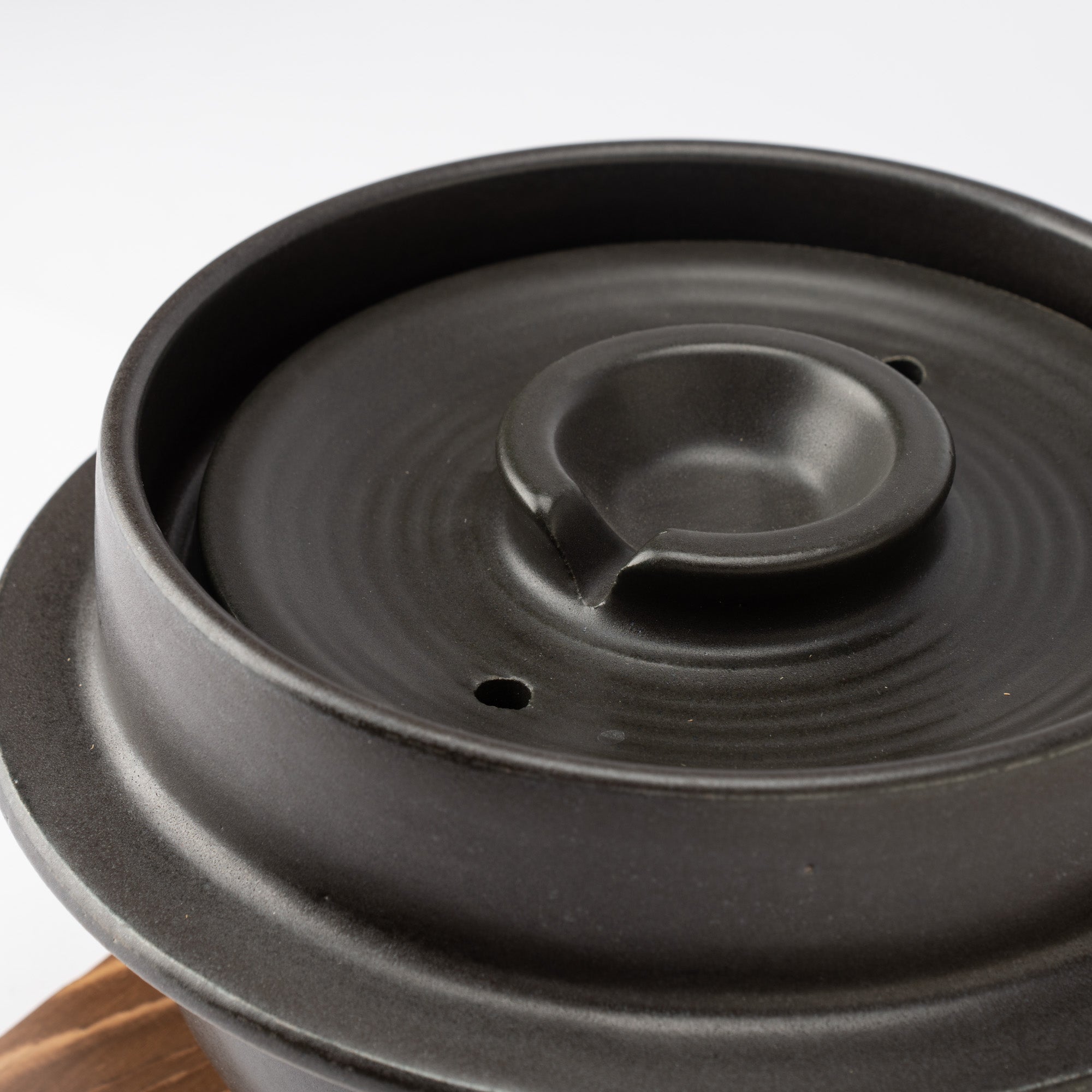
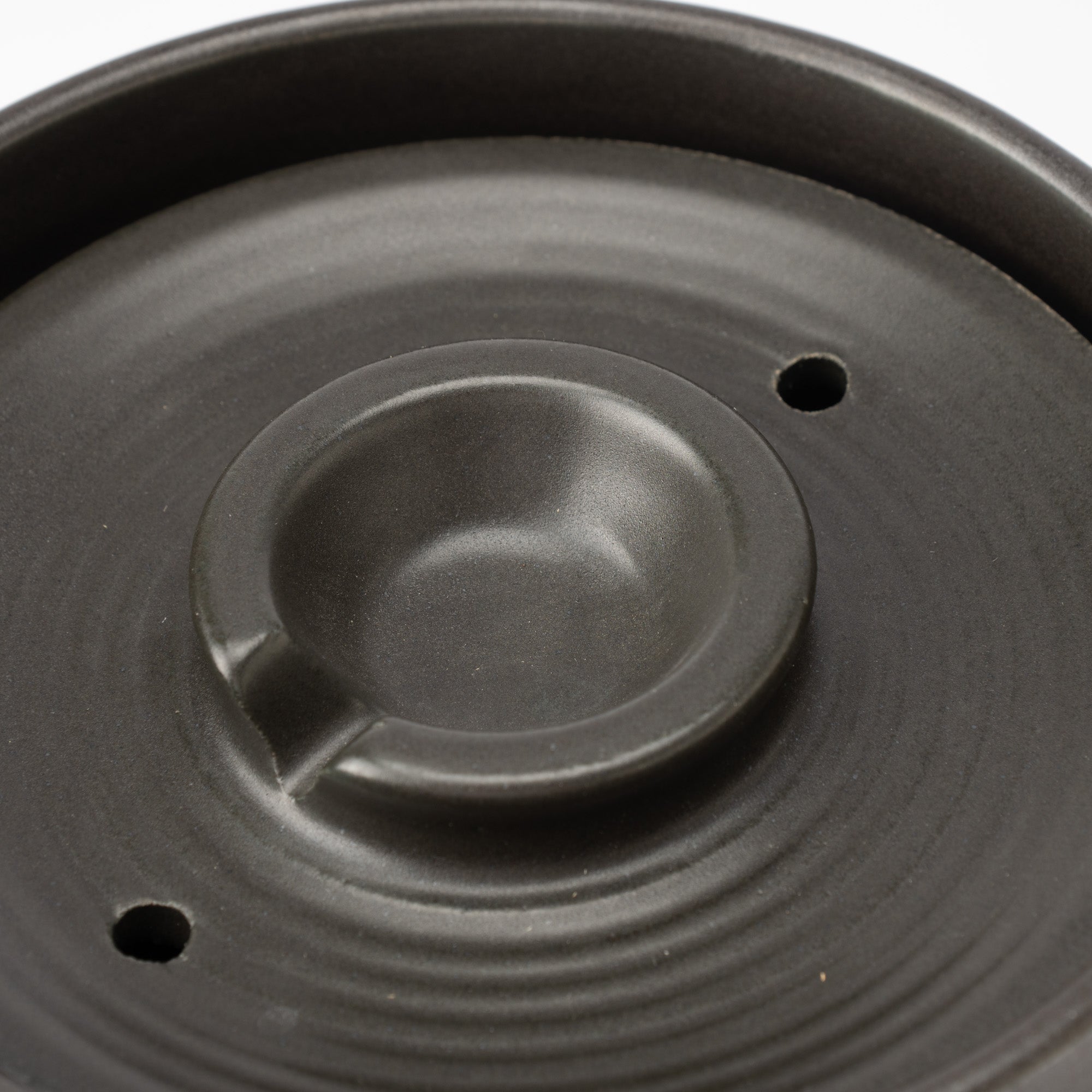
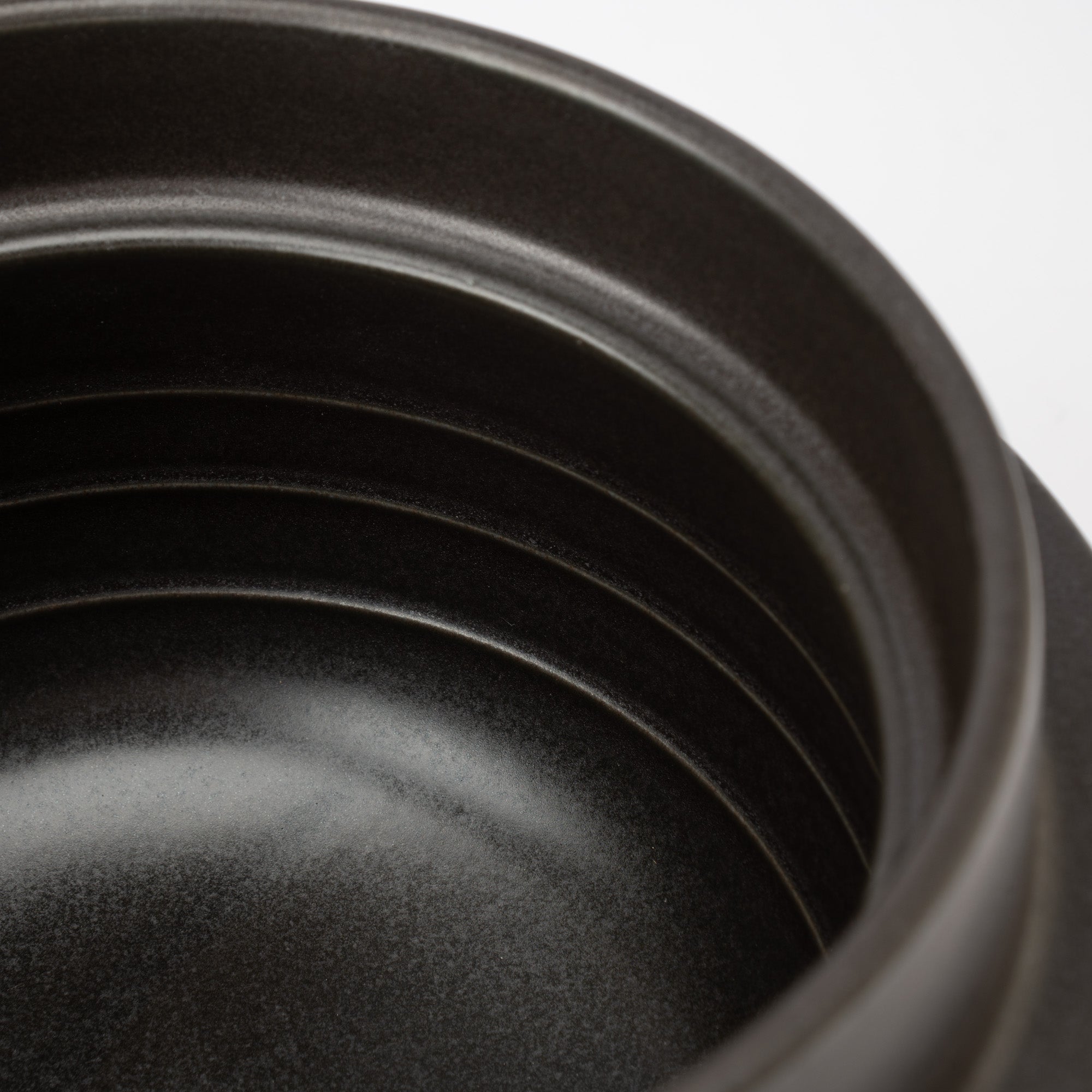
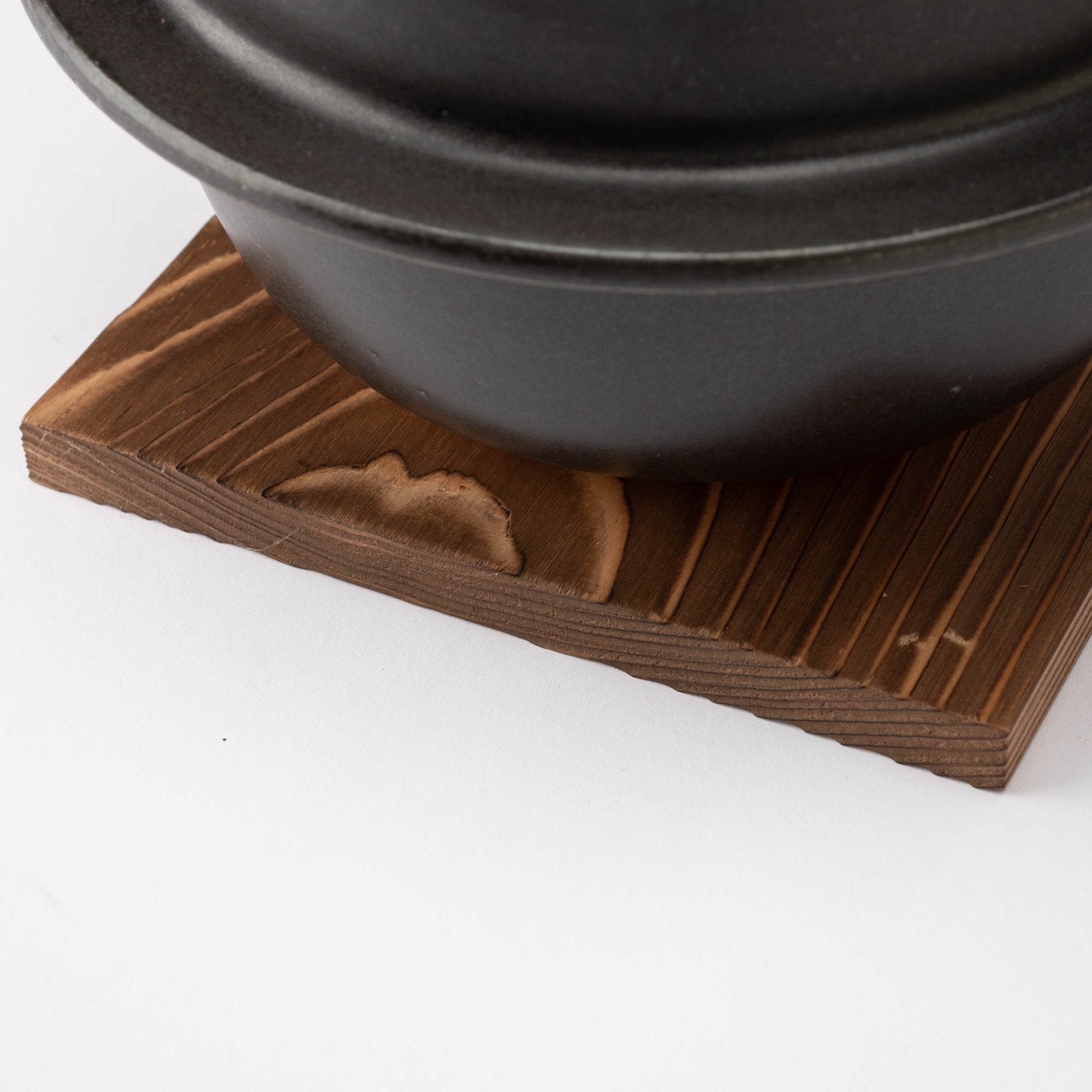
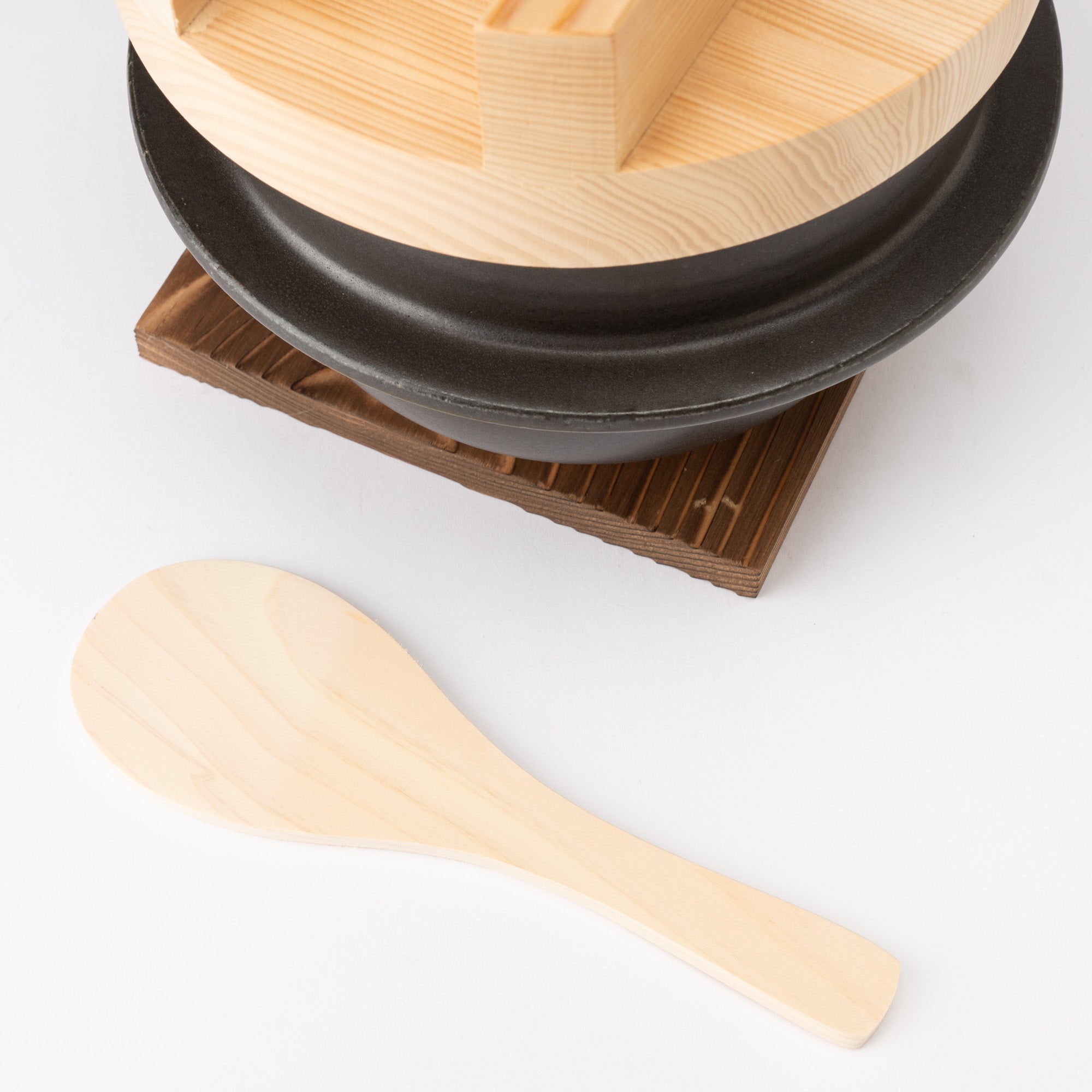
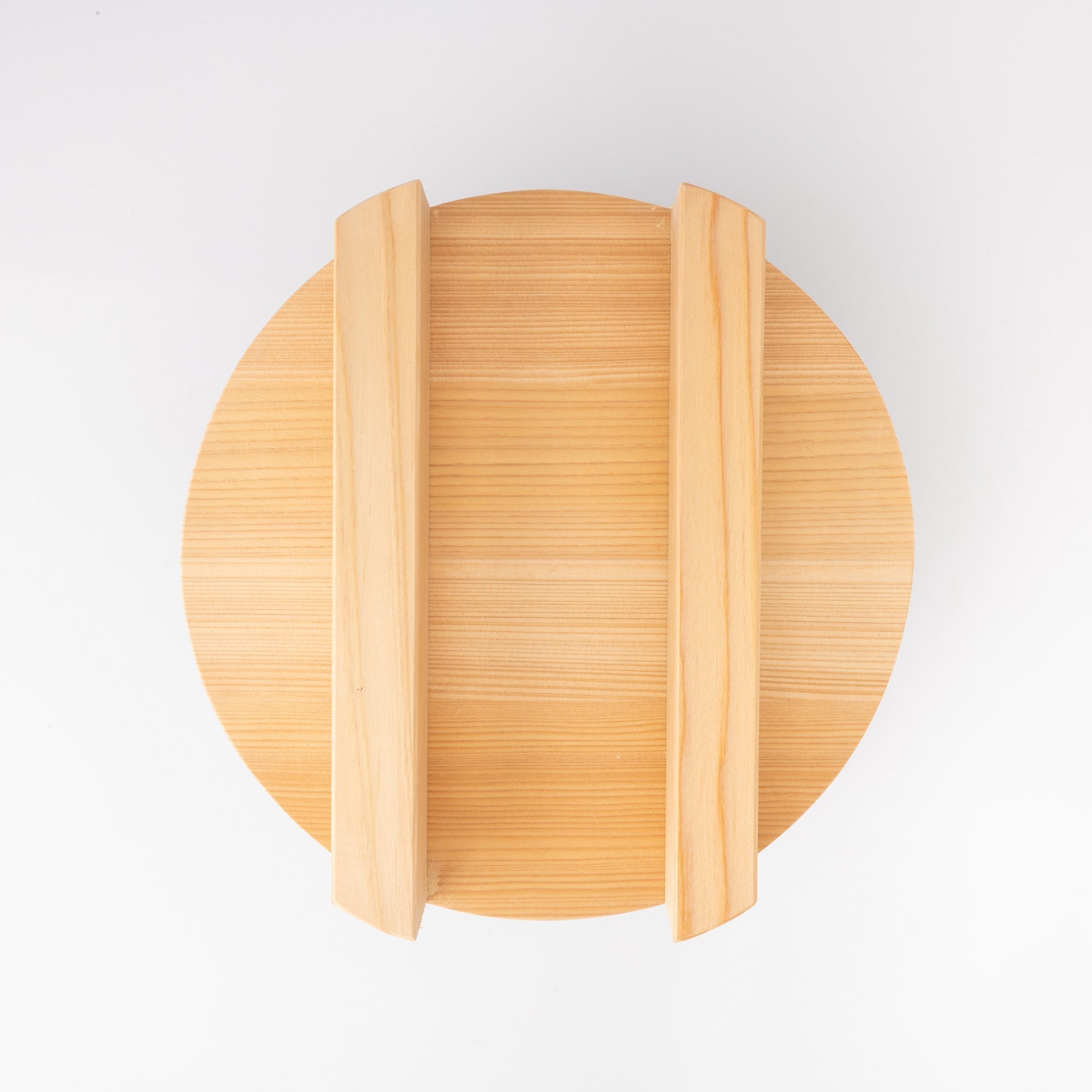
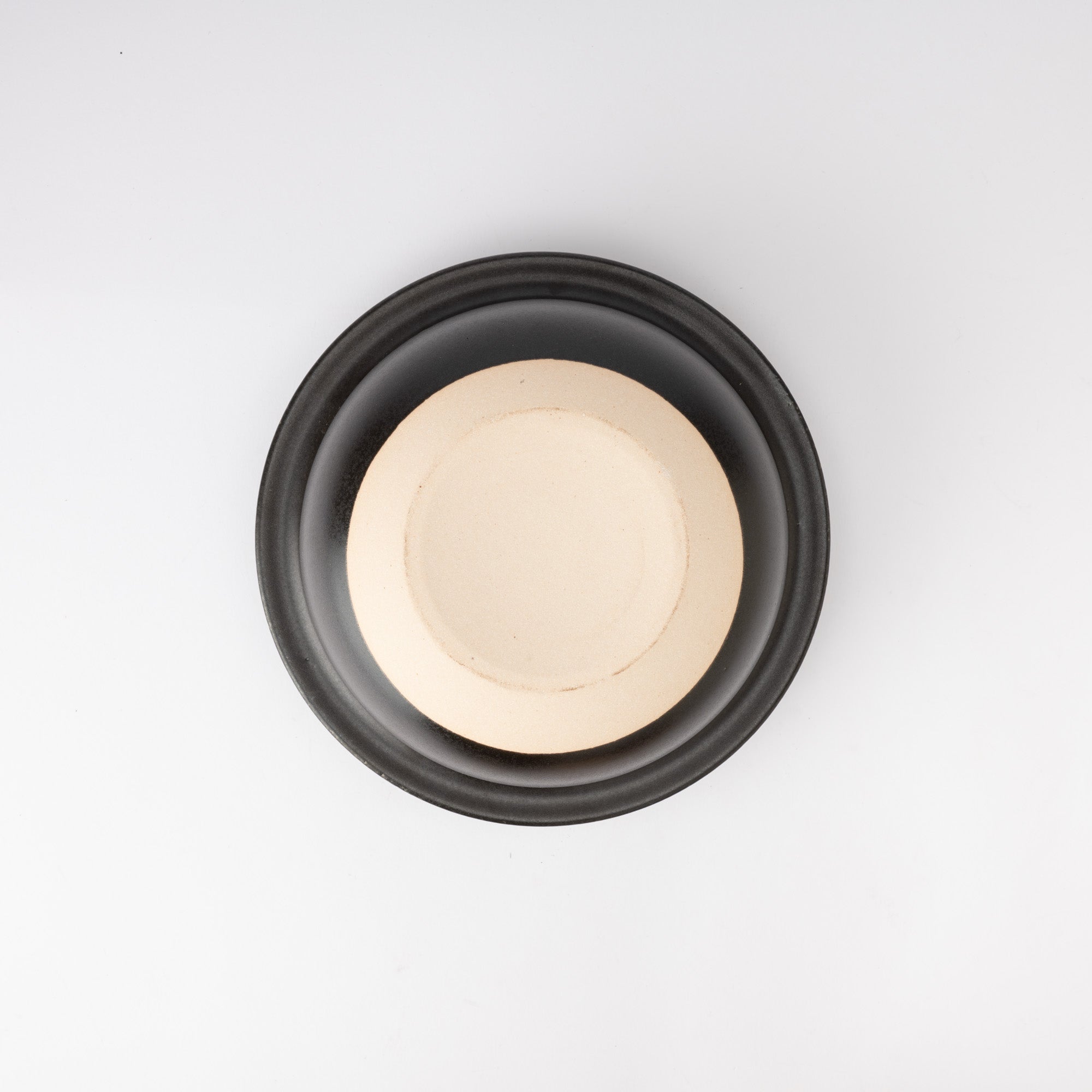
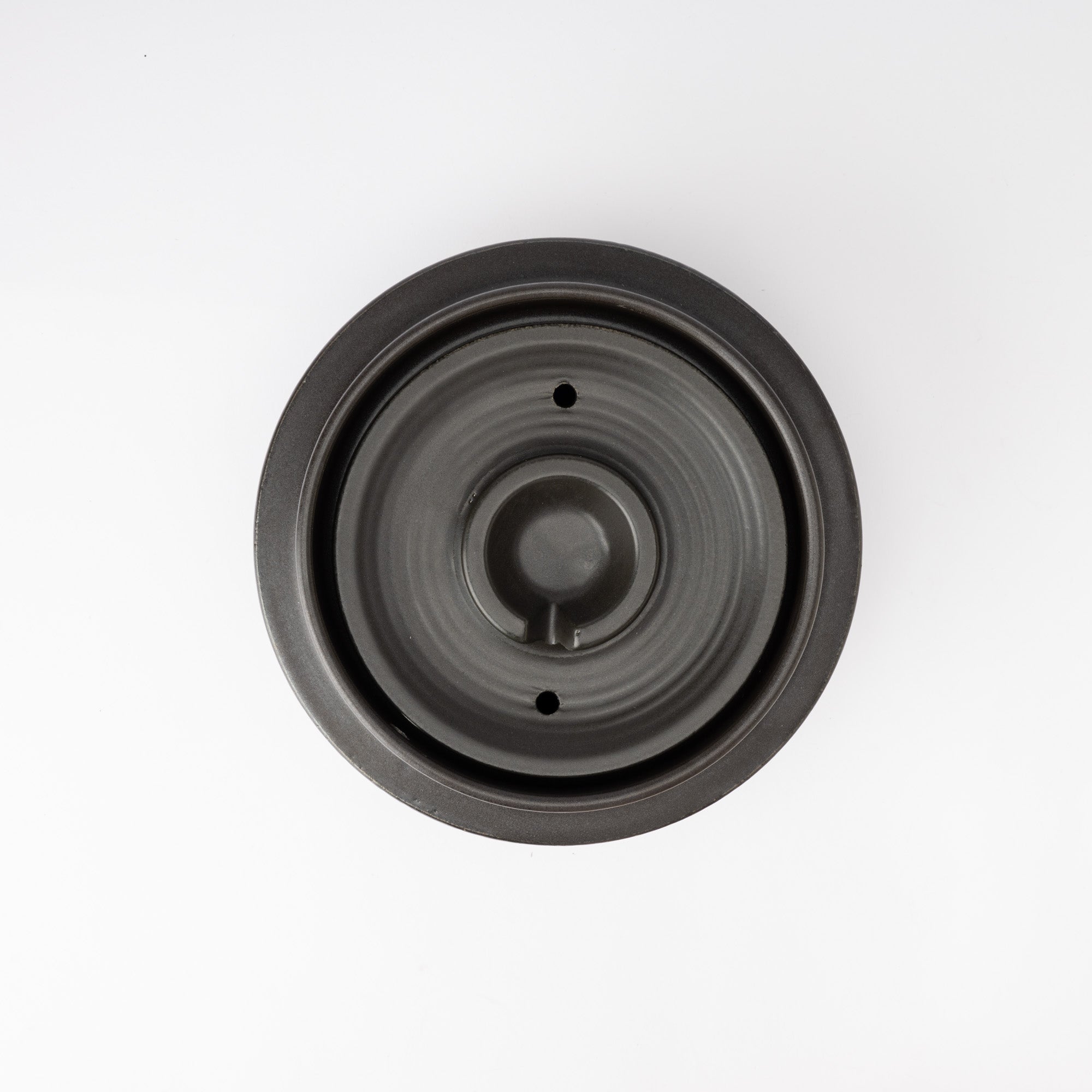
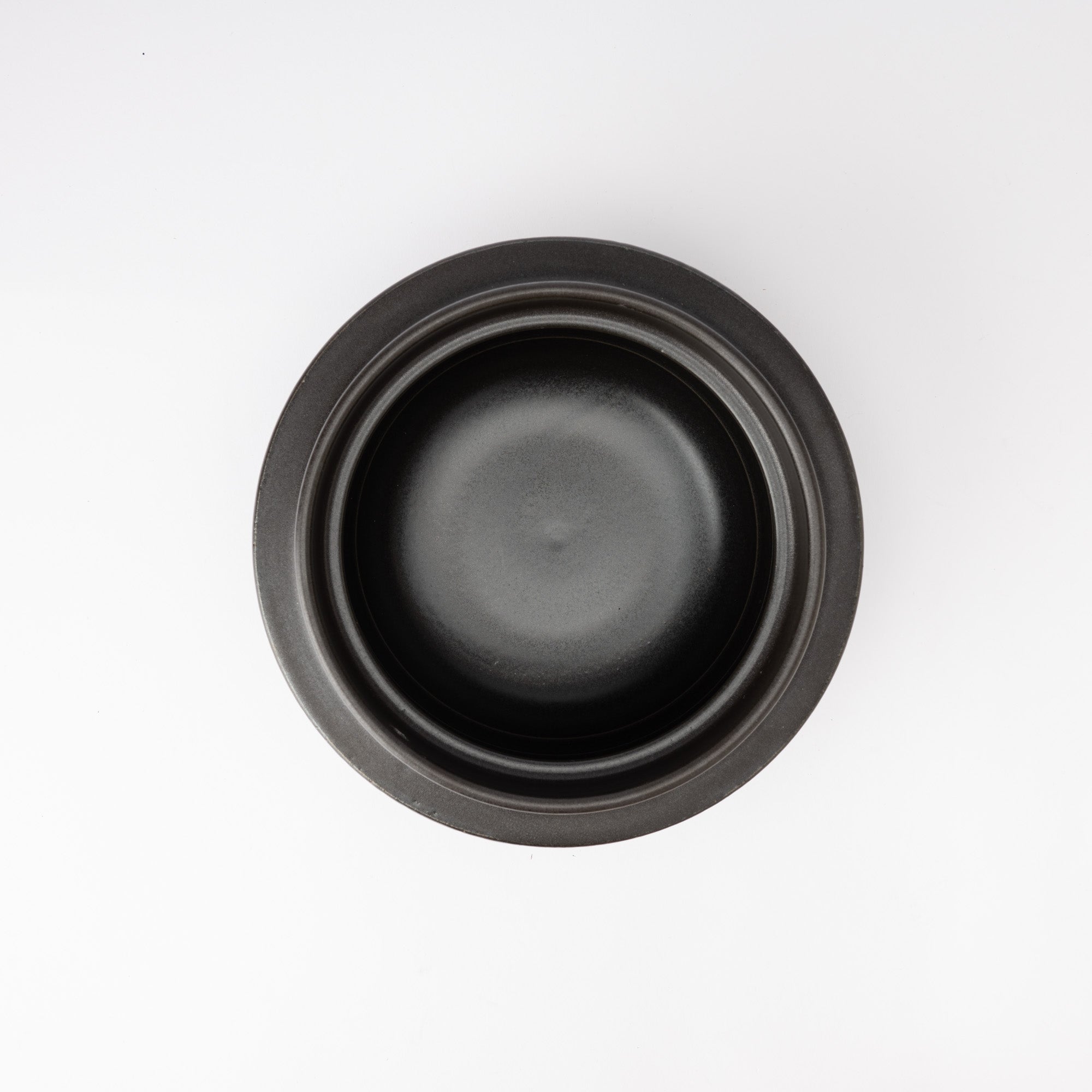
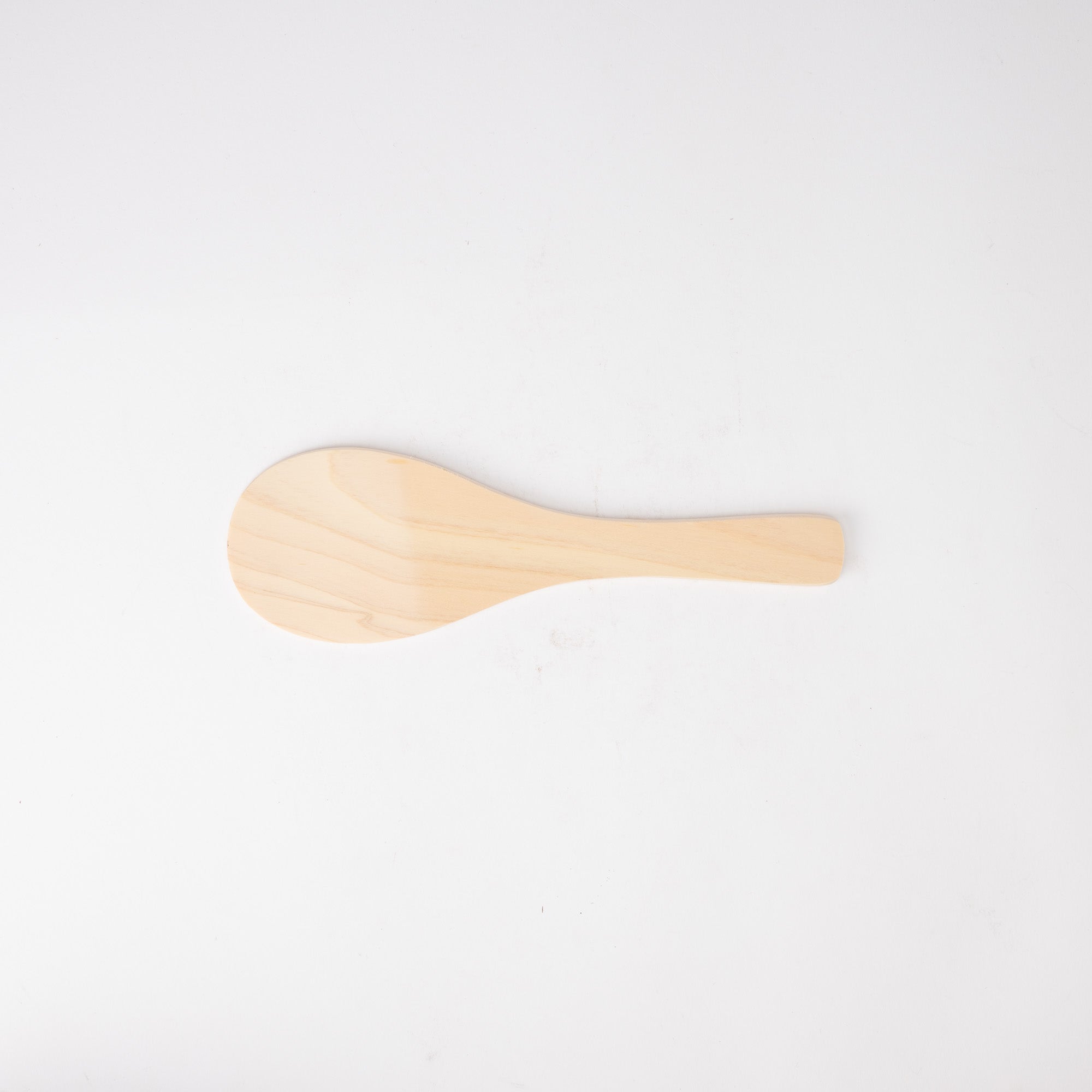
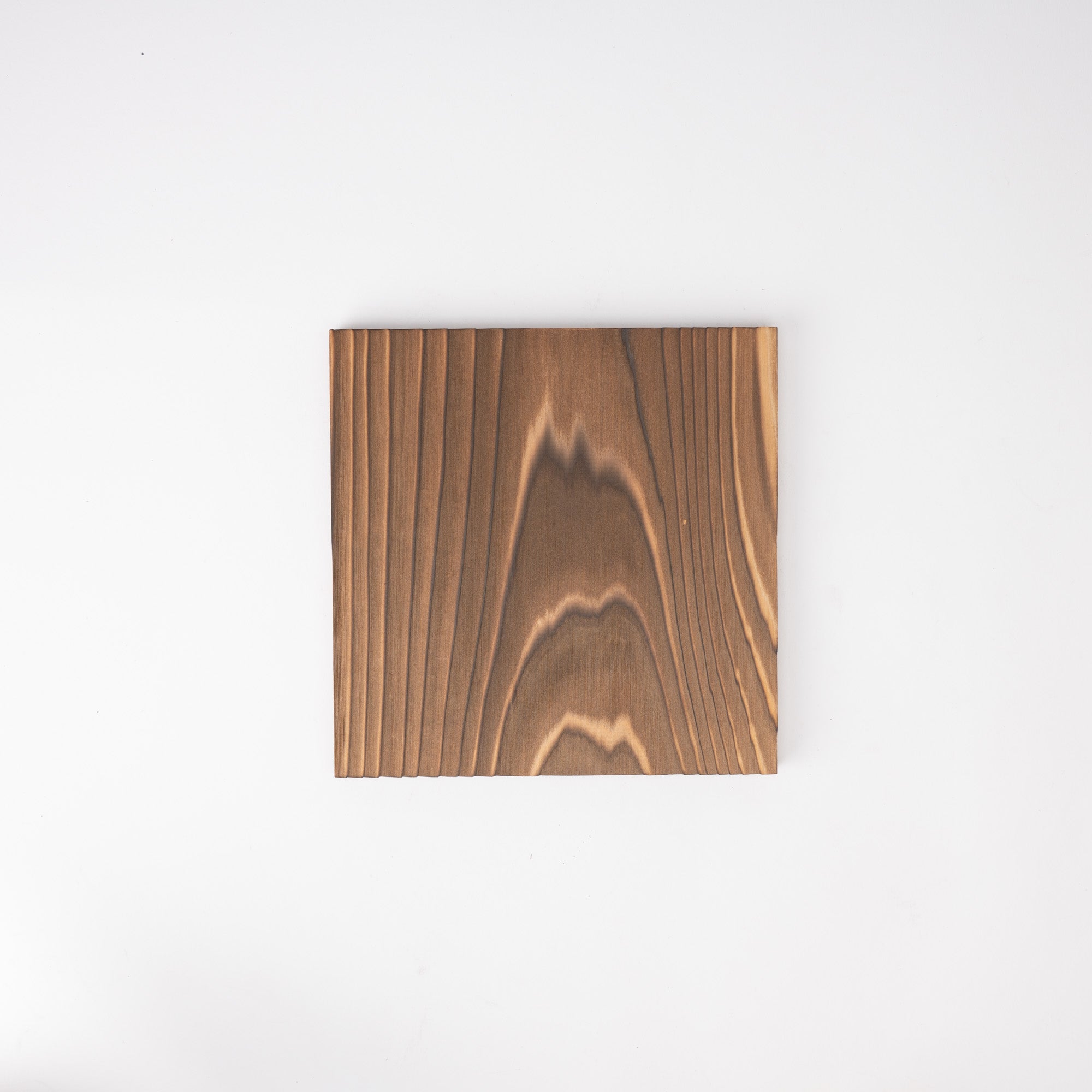
Hagama Donabe Reiskocher, 3 Reiskocherbecher (3 Gou) mit Reisschaufel und Topfuntersetzer
Estimated Shipping Widget will be displayed here!
Dieser Hagama Donabe Reiskocher ist äußerst hitzebeständig, langlebig und verfügt über hervorragende Wärme- und Feuchtigkeitsspeichereigenschaften. Beim Kochen von Reis in einem Tontopf wird genau die richtige Menge Feuchtigkeit freigesetzt, und die Restwärme gart den Reis bis in den Kern, wodurch die Reiskörner schön flauschig. Es kann entweder mit offener Flamme oder einem elektrischen Kochfeld verwendet werden.
Außerdem steigt die Temperatur langsam an, wodurch der Reisgeschmack verstärkt wird. Der Boden des Tontopfs ist leicht abgerundet, um eine gleichmäßige Wärmeverteilung zu gewährleisten. Die Hitze der Flamme verteilt sich über die gesamte Topfoberfläche.
Der Hagama Form wurde ursprünglich entwickelt, um bequem Reis in einem kamado (Kochofen) aus alten Zeiten. Das unverwechselbare Design vermittelt ein nostalgisches Gefühl und unterstreicht die Atmosphäre der japanischen Küche.
Im Lieferumfang des Reiskochers sind außerdem ein Holzdeckel, ein Reislöffel und ein Untersetzer enthalten.
Die Größe ist geeignet, um bis zu drei Reiskocher Tassen (drei gou*), was 450 g (15,8 oz) entspricht.
*Ein Gou ist eine Tasse Reiskocher und ein Gou entspricht 150 g (5,3 oz). Die verwendete Wassermenge beträgt das 1,1- bis 1,2-fache der Reismenge.
EINZELHEITEN
| Quantity | 1 rice cooker, 1 rice scoop and 1 pot mat |
| Size | D 18.5 cm (7.3 in) x H 19.5 cm (7.7 in) / For 3 rice cooker cups (3 Gou) |
| Capacity | 1,650 ml (55.8 fl oz) |
| Material | Stoneware (Not induction compatible) |
| Microwave | Yes |
| Dishwasher | No |
Hersteller / Marke
GINPO wurde 1932 von Ginpo Toki gegründet und ist eine renommierte Marke, die auf dem Erbe der Banko-Ware wurzelt und seit vier Generationen in Yokkaichi, Präfektur Mie, weitergeführt wird. Trotz des eingeschränkten Zugangs zu lokalen Materialien hat sich das Unternehmen kontinuierlich weiterentwickelt und verbindet traditionelle Handwerkskunst mit ständiger Innovation, um den sich ändernden Bedürfnissen des Alltags gerecht zu werden.
Die charakteristischen Serien – Kikka, Hana Mishima und Sumi-Kannyu – verkörpern Eleganz und Funktionalität zugleich. Durch einen sorgfältigen fünfstufigen Produktionsprozess, der handwerkliches Können mit moderner Technologie verbindet, ist GINPO bestrebt, vom Rohton bis zur fertigen Form gleichbleibend hochwertige Donabe-Produkte zu liefern.
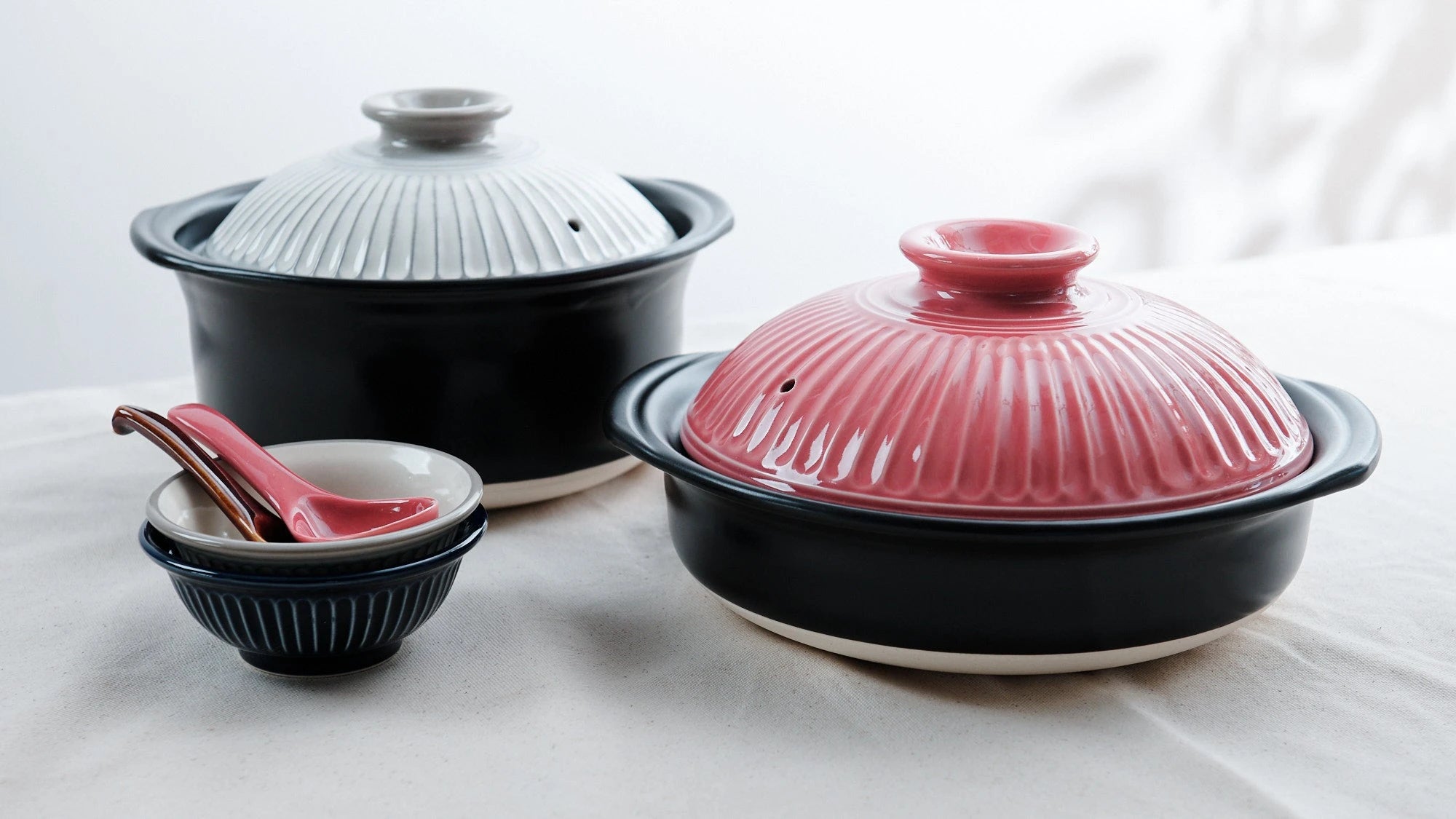
Kunsthandwerk
Von alltäglichem Geschirr bis hin zu Blumenvasen ist Yokkaichi Banko-Ware, allgemein als Banko-Ware bezeichnet, für ihre bemerkenswerte Vielfalt bekannt. Zu den bekanntesten Kreationen gehört die donabe, oder japanischer Tontopf. Er ist wegen seiner Haltbarkeit und Wärmespeicherung beliebt und ist zu einem Grundnahrungsmittel für hausgemachte Mahlzeiten geworden – und heute sind rund 80 Prozent aller in Japan produzierten Donabe Banko-Ware.
Banko-Keramik entstand in der Mitte der Edo-Zeit (1603–1868 n. Chr.), als ein kultivierter Teeliebhaber namens Nunami Rozan im heutigen Kuwana in der Präfektur Mie mit der Herstellung von Keramik begann. Anstatt die Ware nach ihrer Region zu benennen, wählte er das Wort „Banko„“ – was „Ewigkeit“ bedeutet – als Wunsch, dass seine Kreationen über Generationen hinweg Bestand haben. Dieser beständige Geist lebt bis heute weiter, und in Anerkennung seines kulturellen und historischen Werts wurde Banko-Ware 1979 vom japanischen Ministerium für Wirtschaft, Handel und Industrie zum traditionellen Kunsthandwerk erklärt.
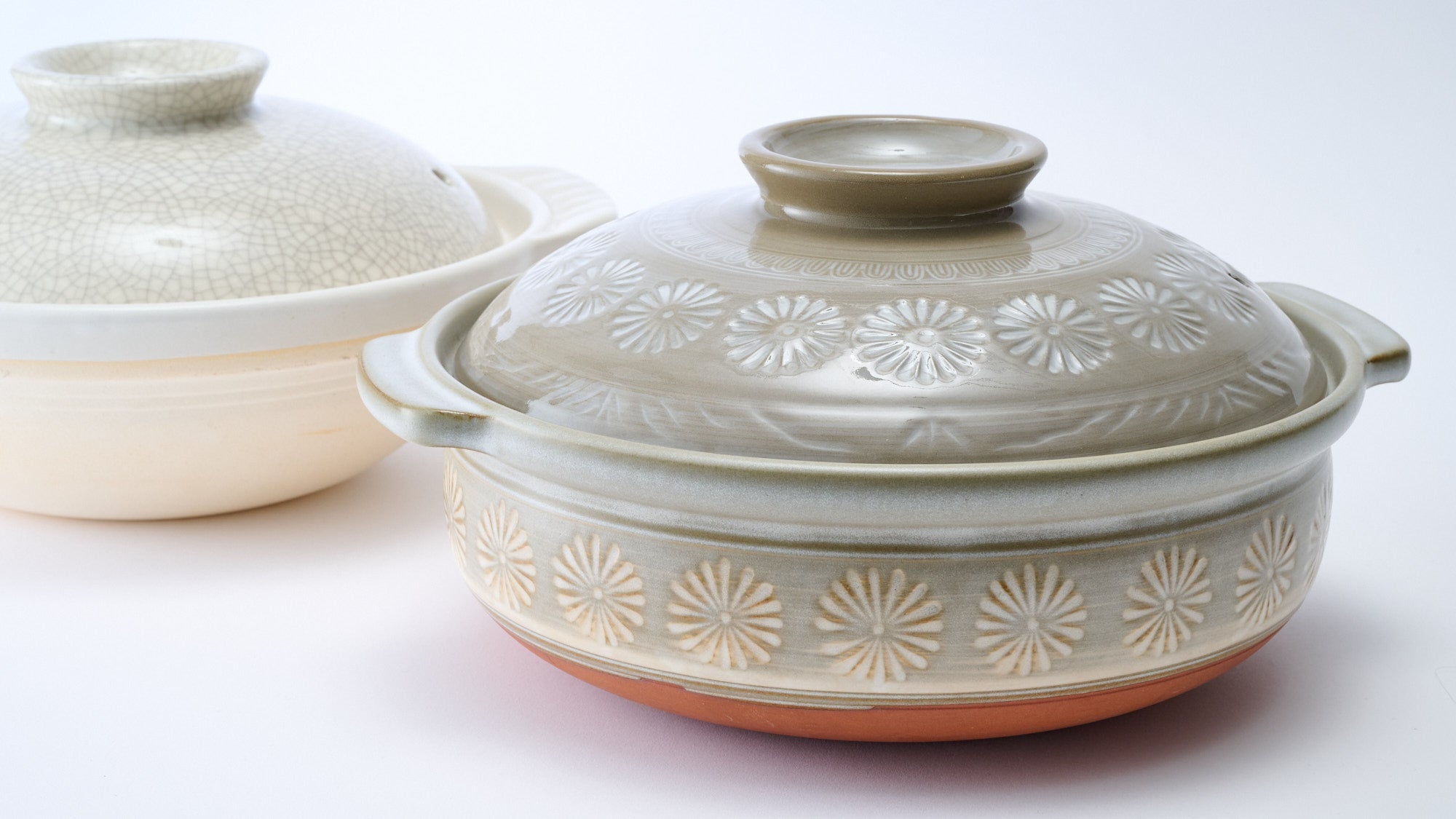
Optionen auswählen

































Estimated Shipping Widget will be displayed here!
Reiskocher
Entdecken Sie die Kunst des Reiskochens mit unseren traditionellen japanischen Reiskochern. Diese sorgfältig gefertigten, formschönen Töpfe sorgen für gleichmäßiges Garen und bringen den natürlichen Geschmack und die Textur der Körner zur Geltung. Ideal für alltägliche Mahlzeiten oder besondere Anlässe vereinen sie Funktionalität mit zeitloser japanischer Handwerkskunst.
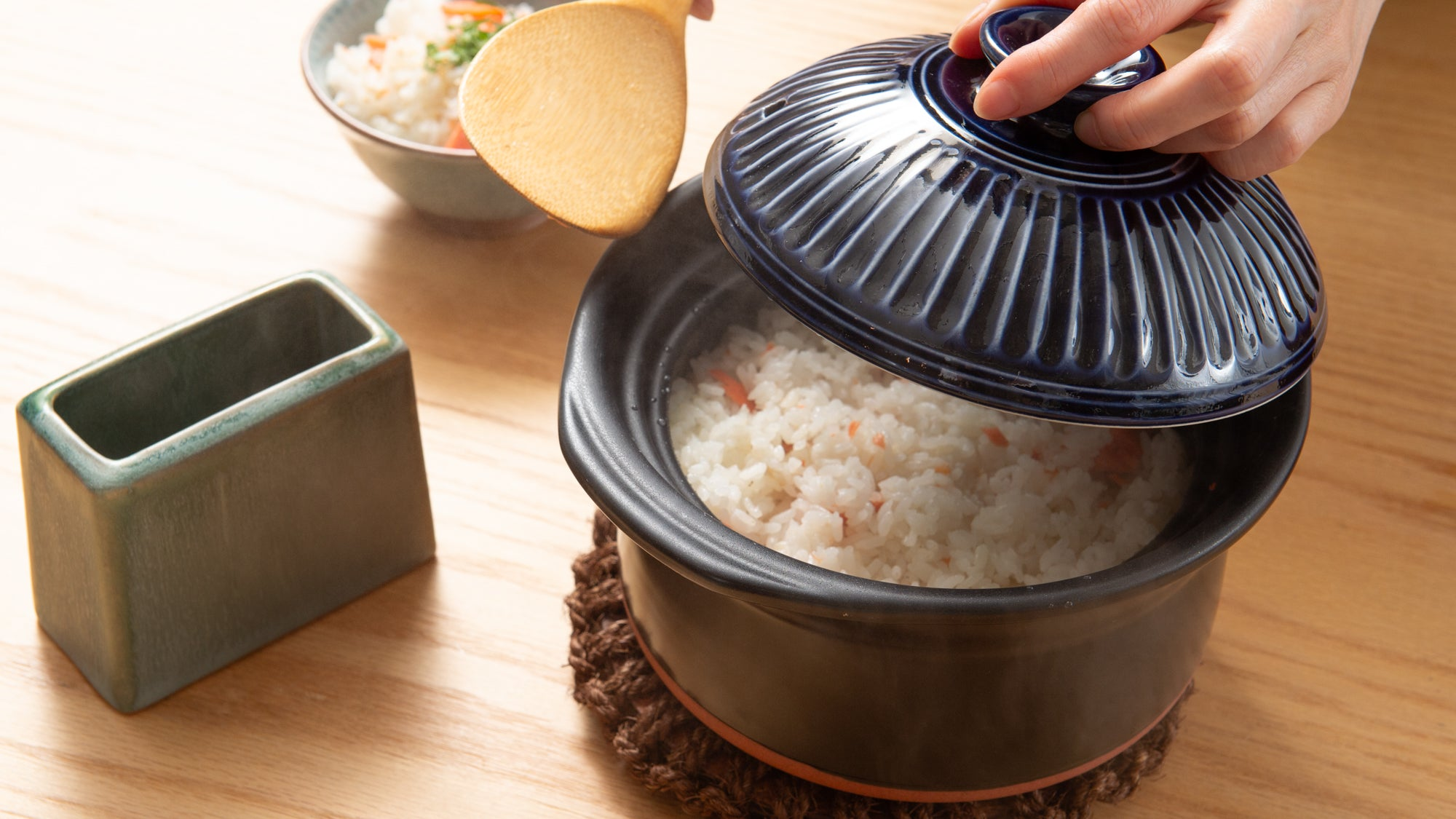
Steingut
Aus unserer Kollektion an Geschirr und Essgeschirr haben wir Steinzeugprodukte zusammengestellt, die die Wärme des Materials voll zur Geltung bringen. Wir hoffen, dass Sie diese Stücke, die bei Menschen jeden Alters und aus allen Regionen beliebt sind, in Ihrem Zuhause willkommen heißen.
